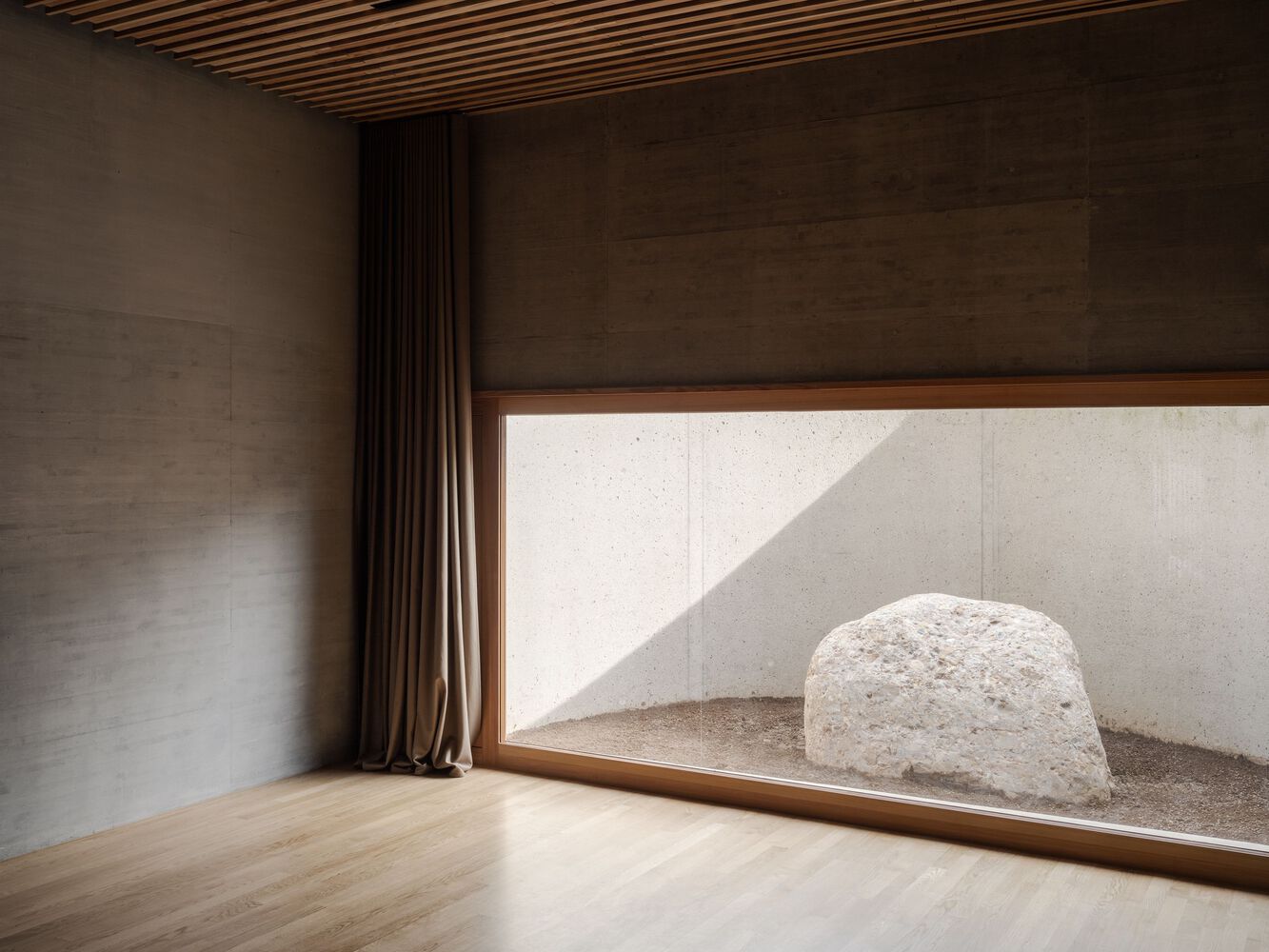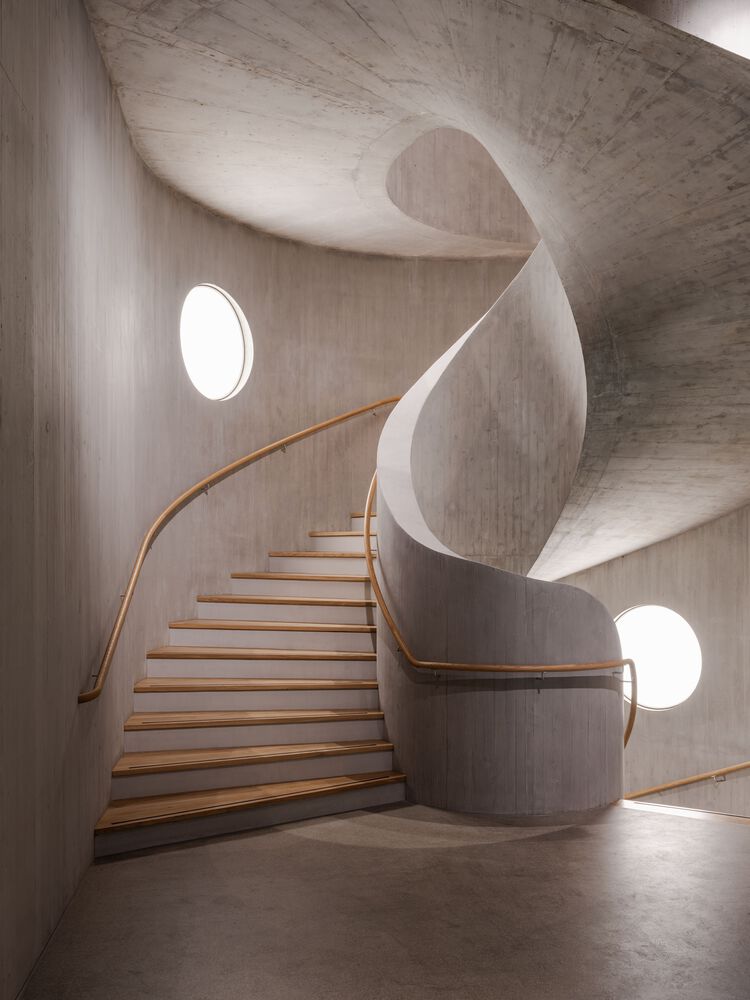
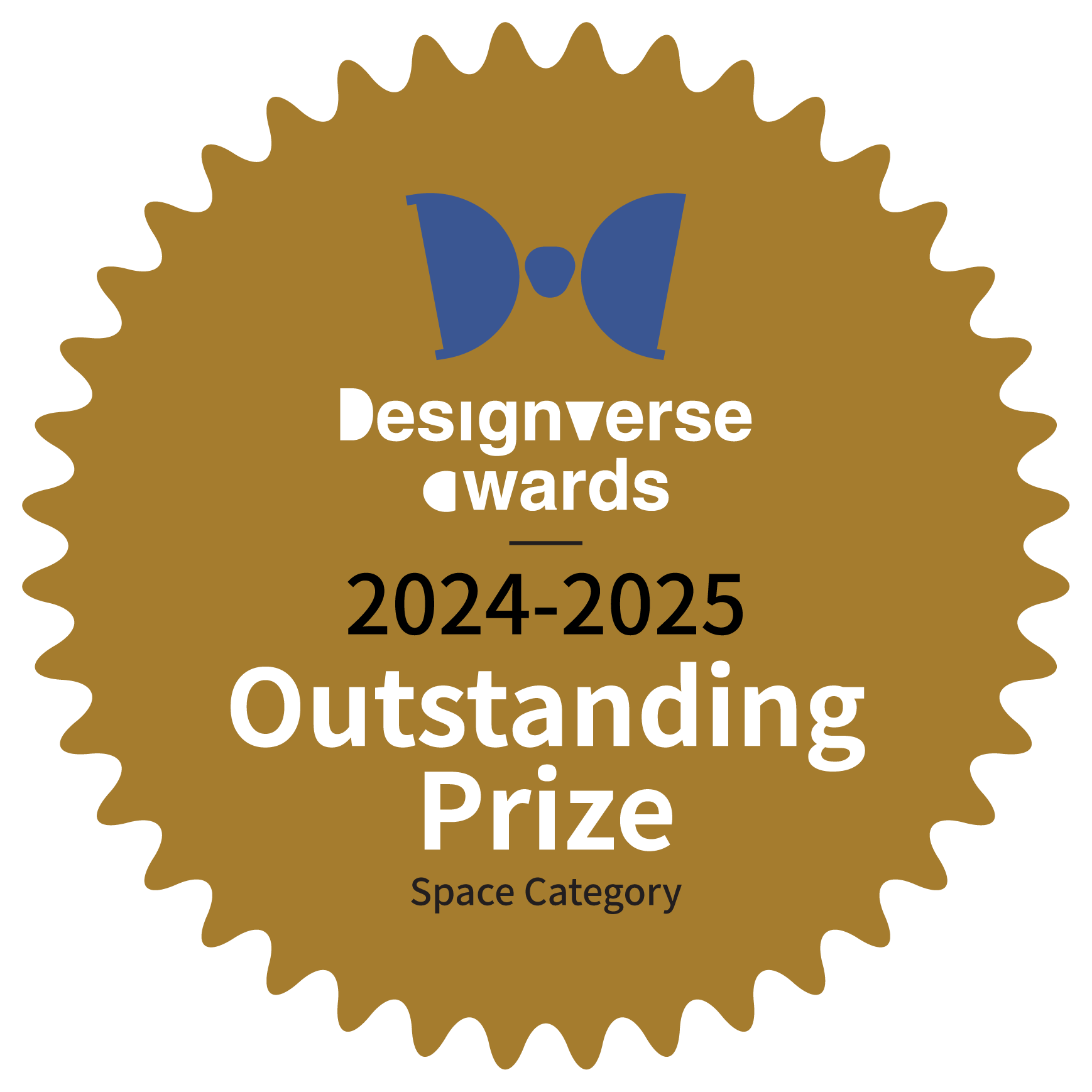
University Children’s Hospital Zurich | Herzog & de Meuron
赫尔佐格 & 德梅隆 ,发布时间2024-12-25 10:58:50
Location: Zurich, Switzerland
Architect: ARGE KISPI HdM Basel Ltd. / Gruner AG, Basel, Switzerland
Project Architect: Herzog & de Meuron Basel Ltd, Basel, Switzerland
Site Architect: Gruner AG, Basel, Switzerland
Structural Engineering: ZPF Ingenieure AG, Basel, Switzerland
Civil Engineering: EBP Schweiz AG., Zurich, Switzerland
Landscape Architect: August + Margrith Künzel Landschaftsarchitekten AG, Binningen, Switzerland
Landscape Architect (Realisation): Andreas Geser Landschaftsarchitekten, Zurich, Switzerland
HVAC Engineering : Gruner AG, (Gruner Gruneko), Basel, Switzerland
Electrical Engineering: Amstein + Walthert AG, Zurich, Switzerland
Building Automation & Smart Building: Jobst Willers Engineering AG, Zurich, Switzerland
Plumbing Engineering: Ingenieurbuero Riesen AG, Bern, Switzerland
Cost Consulting: Gruner AG, Basel, Switzerland
Fire Protection Consulting: Gruner AG, Basel, Switzerland
Facade Consulting: Pirmin Jung Ingenieure AG, Rain, Switzerland
Facade Consulting: Buri Mueller Partner GmbH, Burgdorf, Switzerland
Building Physics Consulting: Kopitsis Bauphysik AG, Wohlen, Switzerland
Medical Planning: Evomed AG, Duebendorf, Switzerland
Medical Planning: Institut fuer Beratung im Gesundheitswesen, (IBG), Aarau, Switzerland
Laboratory Planning: Laborplaner Tonelli AG, Gelterkinden, Switzerland
Office Consulting: Kinzo Architekten GmbH, Berlin, Germany
Climate Engineering: Transsolar Energietechnik GmbH, Stuttgart, Germany
Sustainability Consulting & Environmental Engineering: Basler & Hofmann West AG, Ingenieure, Planer und Berater, Zollikofen, Switzerland
Sustainability Consulting & Environmental Engineering: DB-B Dieter Bauer Beratungen, Bern, Switzerland
Gastronomy Consulting: Creative Gastro Concept und Design AG, Hergiswil, Switzerland
Logistics Consulting: AS Intra Move UG, Rheinfelden (Baden), Germany
Lighting Consulting: LichtKunstLicht AG, Bonn, Germany
Signage Consulting: Integral Axel Steinberg Zürich GmbH, Zurich, Switzerland
Audio Visual Consulting: RGBP AG, Thalwil, Switzerland
Traffic Consulting: Gruner AG, Basel, Switzerland
Traffic Consuting: moveIng AG, Basel, Switzerland
Door Specialist: TeKoSi AG, Thayngen, Switzerland
Gestaltungsplan: Planwerkstadt AG, Zurich, Switzerland
Construction Geologist: Dr. Heinrich Jaeckli AG, Zurich, Switzerland
Building Data
Site Area: 502'135 sqft, 46'650 sqm
Gross floor area (GFA): 1'035'982 sqft, 96'246 sqm
Net floor area: 515'031 sqft, 47'848 sqm
Gross volume (GV): 14'693'210 cbft, 416'065 cbm
Building Data (Acute Hospital)
Site Area: 33,250 sqm, 357,880 sqft
Gross Floor Area (GFA): 79,215 sqm, 852,610 sqft
Gross Volume (GV): 346,307 cbm, 12,226,200 cft
Building Footprint: 16,375 sqm, 176,260 sqft
Building Dimensions: Length 200 m, Width 110 m, Height 12-19 m
Number of Levels: 3 + 2 underground
Building Data (Building for Research & Teaching)
Site Area: 13,400 sqm, 144,240 sqft
Gross Floor Area (GFA): 16,101 sqm, 173,280 sqft / 930 sqm, 10,010 sqft (Tunnel)
Gross Volume (GV): 66,342 cbm, 2,342,850 cft / 3,417 cbm, 120,670 cft (Tunnel)
Building Footprint: 2,010 sqm, 21,640 sqft
Building Dimensions: Diameter 55.4 m, Height 30 m
Number of Levels: 7 + 2 underground
Use / Function (Acute Hospital)
Functional Areas: ∼48
Rooms: ∼2,300, of which 1,500 are for medical use
Spatial Program: ∼15,000 sqm (Examination & Treatment), ∼9,000 sqm (Care), ∼1,200 sqm (Administration), ∼7,600 sqm (Infrastructure), ∼1,900 sqm (Restaurant and Reception), 4,800 sqm (Underground Parking)
Beds: 200 (Total), 51 (IPS/Neonatology), 114 (Bedwards)
Operating Rooms: 6
Corridor Length: ∼5.5 km combined
Car Parking: 341
Bicycle Parking: 220
Sustainability: SGNI Platin (Swiss Sustainable Building Council)
Use / Function (Building for Research & Teaching)
Laboratories: ∼2,300 sqm (Diagnostic), ∼6,300 sqm (Research)
Teaching: 1 lecture theatre (320 seats), 2 seminar rooms (100 seats), Agora as an interconnectable event venue (670-1,200 seats)
Study & Offices: ∼80 workstations, ∼200 temporary workstations
Bistro: ∼70 seats open to the neighbourhood
Bicycle Parking: 130
Sustainability: SGNI Platin (Swiss Sustainable Building Council)
版权声明:本链接内容均系版权方发布,版权属于 赫尔佐格 & 德梅隆,编辑版本版权属于设计宇宙designverse,未经授权许可不得复制转载此链接内容。欢迎转发此链接。
The new University Children’s Hospital lies in Zürich-Lengg, at the foot of a hill known as Burghölzli. It is adjacent to other hospital buildings from several eras and is the largest facility for children and adolescents in Switzerland. It consists of two buildings: the acute-care hospital and the research and teaching facility.

© Herzog & de Meuron
The acute-care hospital to the south consists of a three-story concrete frame with intricate wooden infills that blend into the landscape. The interior functions like a town: the medical specialties are neighborhoods with squares and streets connecting them. On each of the three floors, a central main street runs past various green courtyards that provide orientation and bring daylight into the building. The patients’ rooms on the roof are like individual cottages.
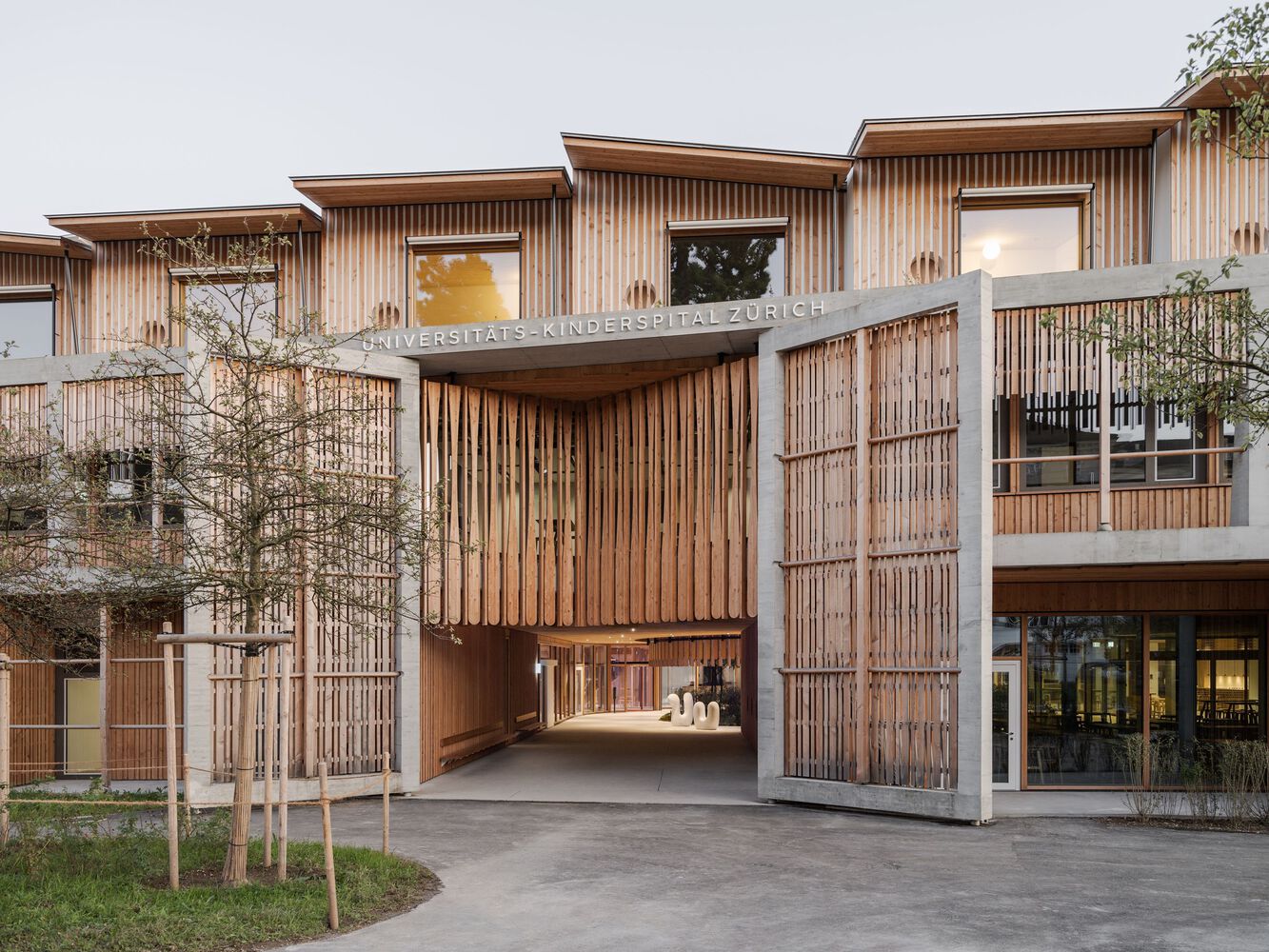
© Herzog & de Meuron
Teaching and research are housed in a white cylindrical building to the north, with an open, five-story atrium in the center. The fields of research are arranged around this core of exchange. Underneath, three lecture halls surrounded by seminar rooms and study areas for students are embedded in the topography of the sloping terrain.

© Herzog & de Meuron
The landscaping includes the planting of over 250 trees. In addition, boulders found underground during construction are placed in and around the buildings, telling of glaciers from the Ice Age. The “inner nature” of the new complex is essential to experiencing the hospital as a place that is conducive to healing.

© Herzog & de Meuron
Both buildings have been awarded the platinum certification of building sustainability as specified by the strict guidelines of the SGNI (Swiss Sustainable Building Council).
The Acute-Care Hospital
The new Children’s Hospital is located in a residential neighborhood dotted with fruit orchards. It is adjacent to the listed building of the University Psychiatric Clinic (PUK), known as the Burghölzli and its entrance, defined by a large open gate, stands directly opposite the entrance to the historic building of 1869. The concave gesture of the façade creates a shared forecourt for both institutions.

© Herzog & de Meuron
The gate opens onto a round courtyard planted with trees, through which the entrance is accessed. The restaurant and access to the therapy facilities below with gardens of their own adjoining the entrance. On the other side, the building’s main street leads to highly frequented types of treatment such as imaging diagnostics, and the surgical day clinic. This central axis, which widens and narrows along the courtyards, terminates at the emergency room, which can also be accessed directly from outside.
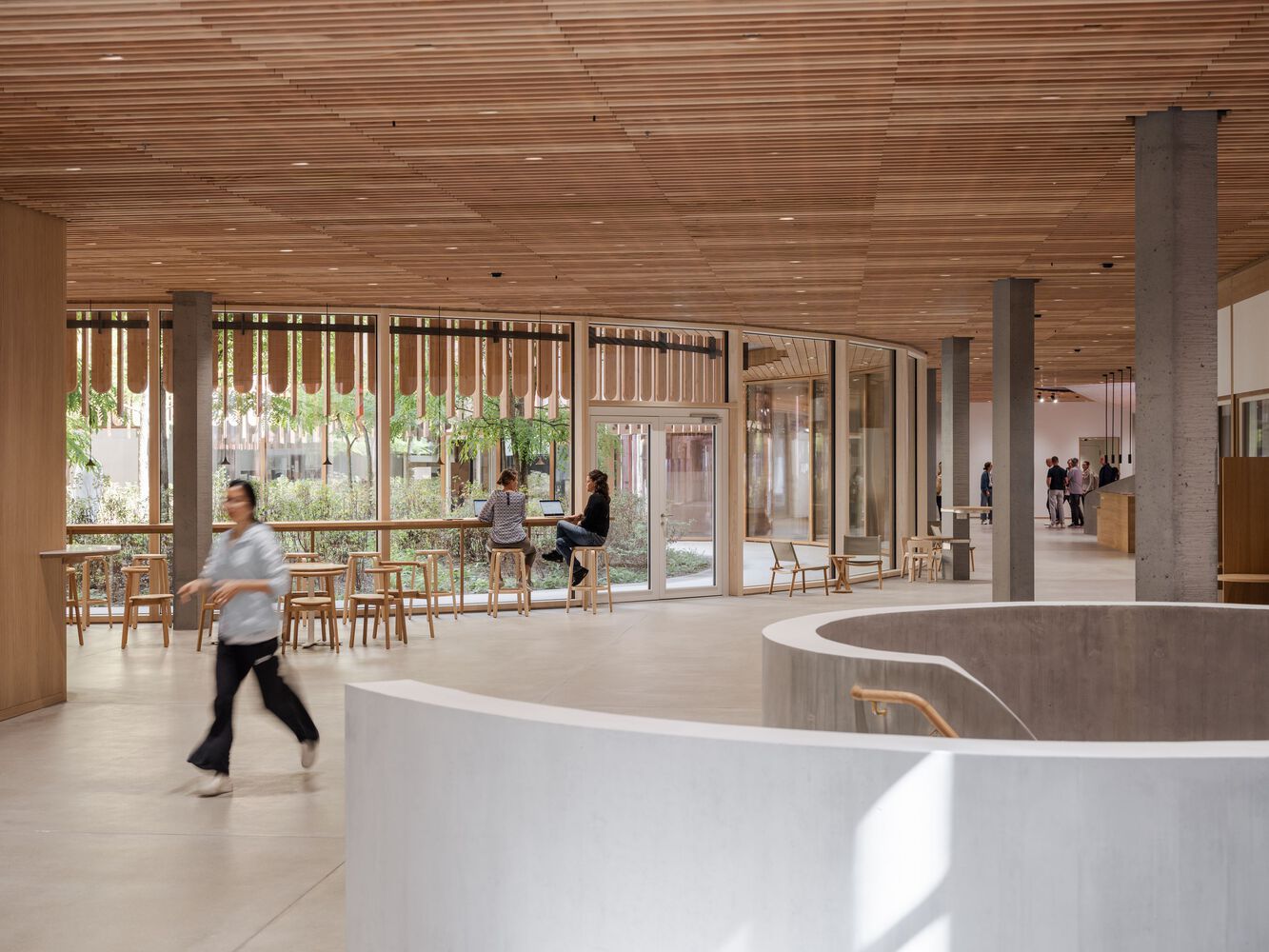
© Herzog & de Meuron

© Herzog & de Meuron
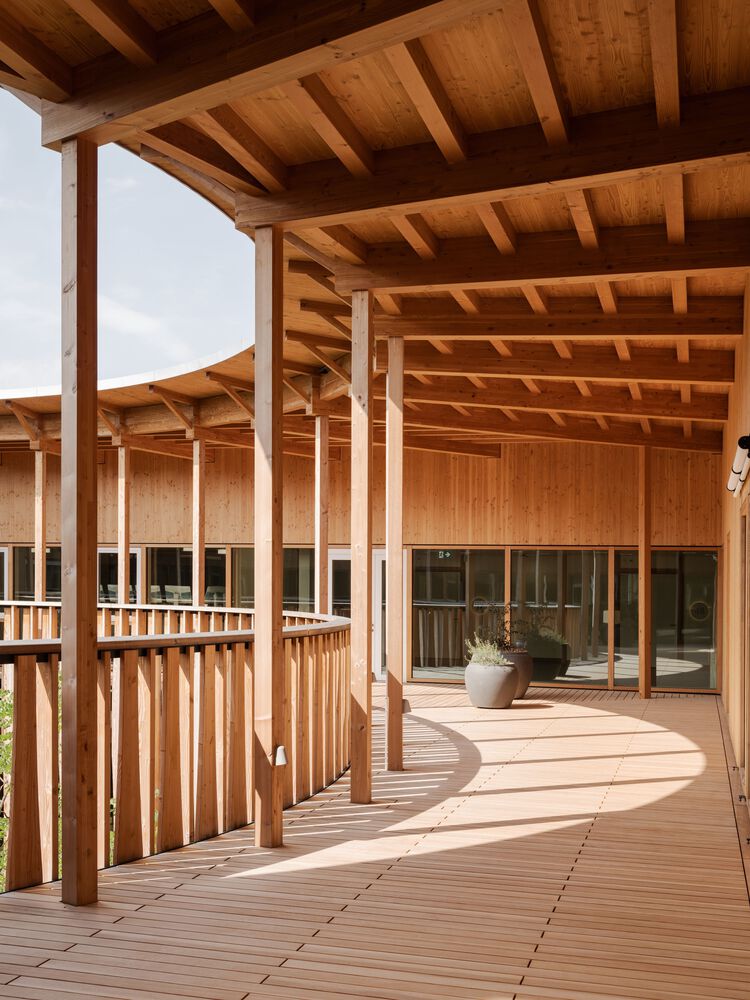
© Herzog & de Meuron
In the center of the second floor, additional services are located on both sides of the main street, such as the hospital school, the pharmacy and other shared uses. An officescape oriented towards the outside is wrapped like a wreath around this central zone and provides some 600 workspaces for medical and administrative staff.

© Herzog & de Meuron
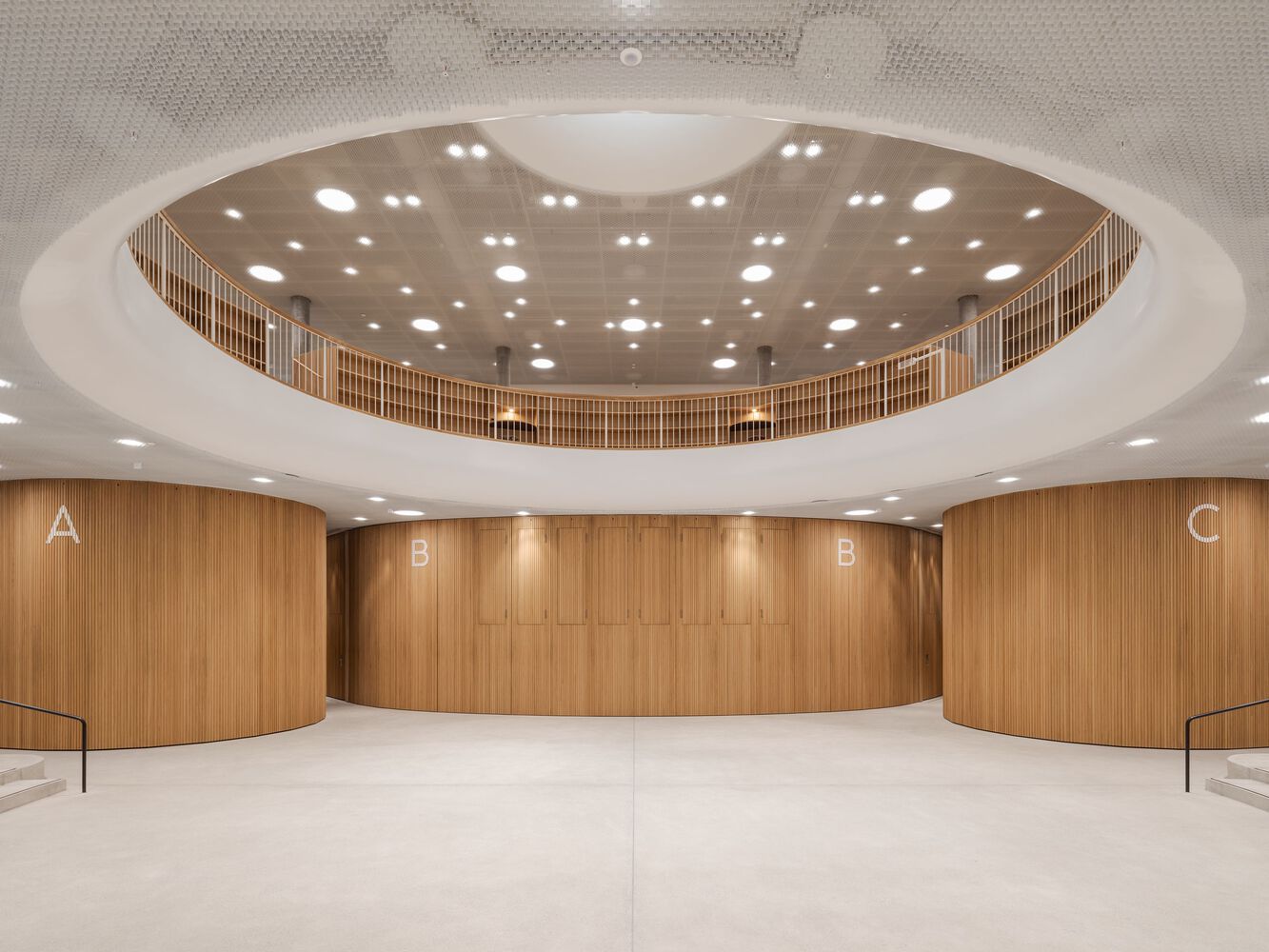
© Herzog & de Meuron
The top floor, the quietest area in the hospital, is reserved for children and adolescents, inpatients who are staying overnight or longer. Each of the 114 rooms is designed as a wooden cottage with a roof of its own, providing privacy, a view of the green outdoors and enough room for parents to spend the night with their children. There are four centers along the main street in the immediate vicinity of the cottages, where children and adolescents can receive transdisciplinary treatment.

© Herzog & de Meuron

© Herzog & de Meuron
The façade of the hospital consists of a three-dimensional, loadbearing concrete structure. It combines the first and second floors. The depth of the façade and the infill, which may be wood, glass, fabric or vegetation, varies depending on orientation and the activity inside. Lightweight construction materials have been used consistently throughout the building except for the concrete supports and the circulation cores. In this way, departments can increase or decrease in size: the flat building with its distinctive shape thus ensures the interior flexibility that is so crucial for hospitals.

© Herzog & de Meuron
The top floor with the inpatient rooms is set back and speaks an architectural language of its own. The rooms are staggered and have rooftops with varying inclinations. The individualized, elementary shape of the cottages clearly underscores the singularity of each and every patient.
The Research and Teaching Facility
The rooms of the cylindrical, white building for research and teaching are organized around a central atrium, encouraging exchange and collaboration among researchers. An agora for teaching and study spreads out under this central space and responds directly to the surrounding landscape. Three lecture halls step into the natural slope of the terrain. Daylight streams in from outside, and thanks to movable walls, the lecture halls, lobby and café can be reconfigured into one large space. This creates an agora with a stage in the middle for special events and room for an audience of 670 people. A gallery overhead contains open workplaces for students. Adjoining seminar rooms on the same level complete the spaces available for university teaching.
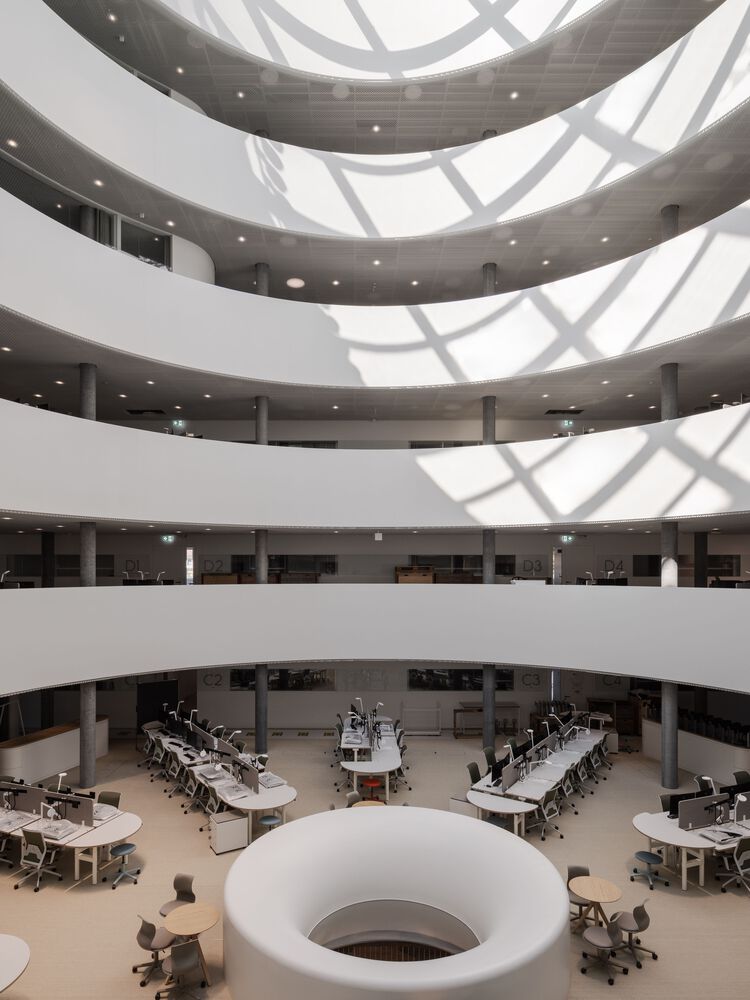
© Herzog & de Meuron
Laboratories for research and diagnosis with accompanying offices on the five floors above have an unobstructed view of the surrounding landscape. Open workspaces are arranged around the atrium for the use of doctoral students and laboratory staff. From them, one can see several stories at once as well as the agora below, which is in turn connected to the atrium above through an oculus—a small, round hole in the ceiling.

© Herzog & de Meuron

© Herzog & de Meuron

© Herzog & de Meuron

© Herzog & de Meuron
Embedded in an expansively designed landscape, the research and teaching building is a standalone structure in the midst of a fruit orchard similar to those in many Burghölzli gardens. The building itself speaks an abstract, clearly geometric language and makes use of few materials. Cantilevered balconies with tall railings painted white give the building the appearance of being both weighty and airy at once.
© Herzog & de Meuron
© Herzog & de Meuron
The two facilities of the Children’s Hospital, though different and distinct, are clearly complementary. Situated on the hill, the circular building for research and teaching guides the gaze towards the lake. The elongated, horizontal shape of the acute-care hospital fits into the flat landscape, providing a view of the mountain range behind it. The hospital focuses on each patient as an individual, and that means not only the healing process but the well-being of relatives and staff as well. The building for research and teaching highlights exchange and collaboration among scientists and students, which is a prerequisite of forward-looking research.
-Jacques Herzog

© Herzog & de Meuron

© Herzog & de Meuron
A healing environment: “People in hospitals are often in life-threatening situations. That is an exceptional challenge not only for patients but also for relatives, carers and physicians. Ironically, hospitals all over the world and even in Switzerland are often the ugliest places. For the past 20 years, we have zeroed in on this issue, because we are convinced that architecture can contribute to the healing process; it can make a substantial difference. Here at the Children’s Hospital, people can see for themselves how daylight coming in from outside and variations in proportion can animate and change a room, how plants and vegetation can blur the distinction between inside and outside and how materials are not just beautiful to look at but also pleasing to the touch. We designed all these things with conscious intent so that people can perceive them, sense them and ultimately feel better. Architecture can contribute to healing.”

© Herzog & de Meuron
A town in miniature: “The curved, three-story main facade with its endearing small-scale wooden houses and variously sloped roofs offers a friendly and warm welcome to young patients and their families. The acute care hospital is organized like a town—with courtyards, streets, alleys, and squares. These, along with the thoughtful use of wood and carefully placed art installations, provide clear and memorable orientation, plenty of daylight, and a connection to nature. The spatial diversity, with views both inside and out, also offers spaces for children, teenagers, and their families to stay and play, as well as restful break areas for hospital staff.”
-Pierre de Meuron
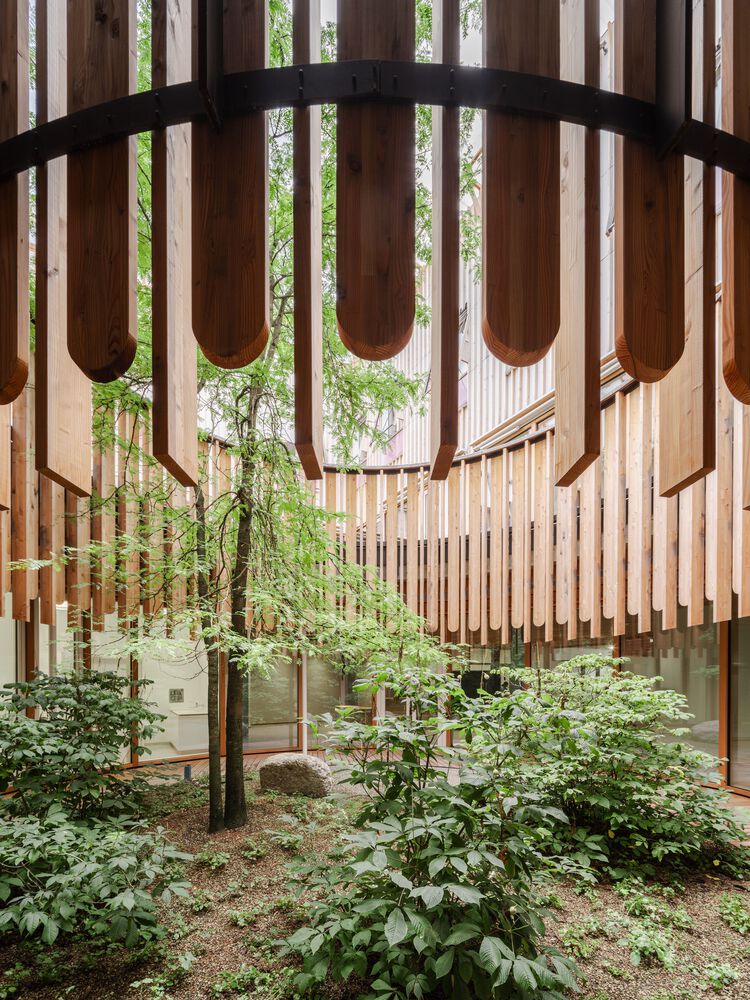
© Herzog & de Meuron
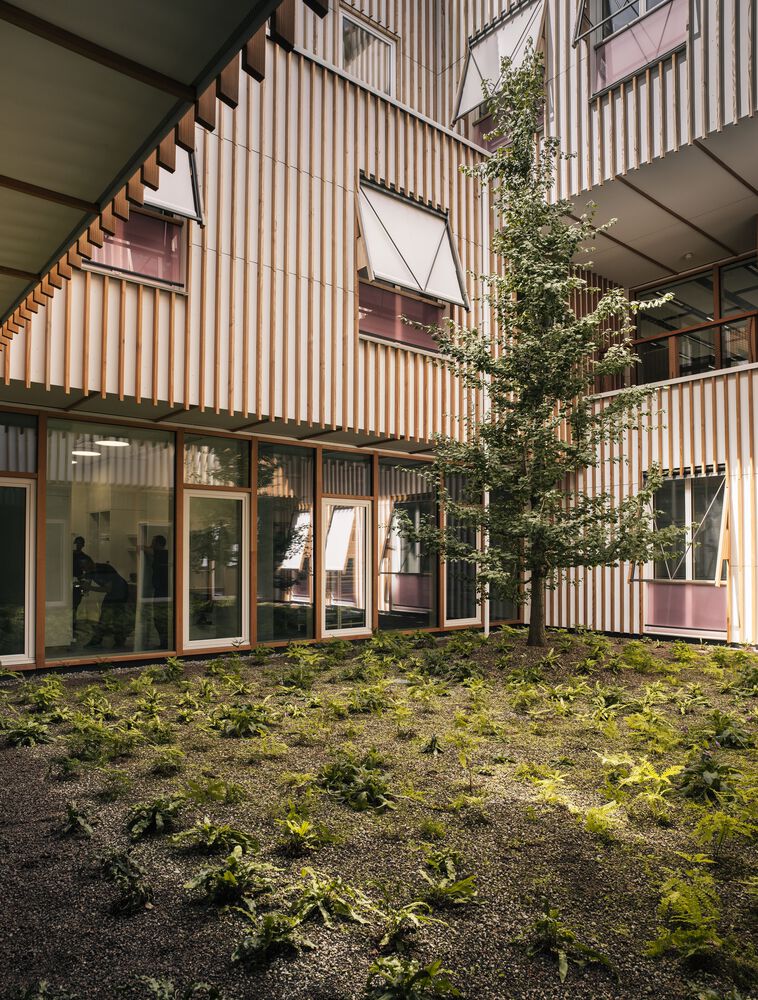
© Herzog & de Meuron

© Herzog & de Meuron
Holistic mission: “In collaboration with many other specialists, we were able to stand by and advise the Eleonoren Foundation throughout all levels of the project, from city planning to architecture, vegetation, materials and even medical fittings and furnishings. The result is a holistically conceived, functional building that is calm and quiet despite its diversity.”
-Christine Binswanger

© Herzog & de Meuron
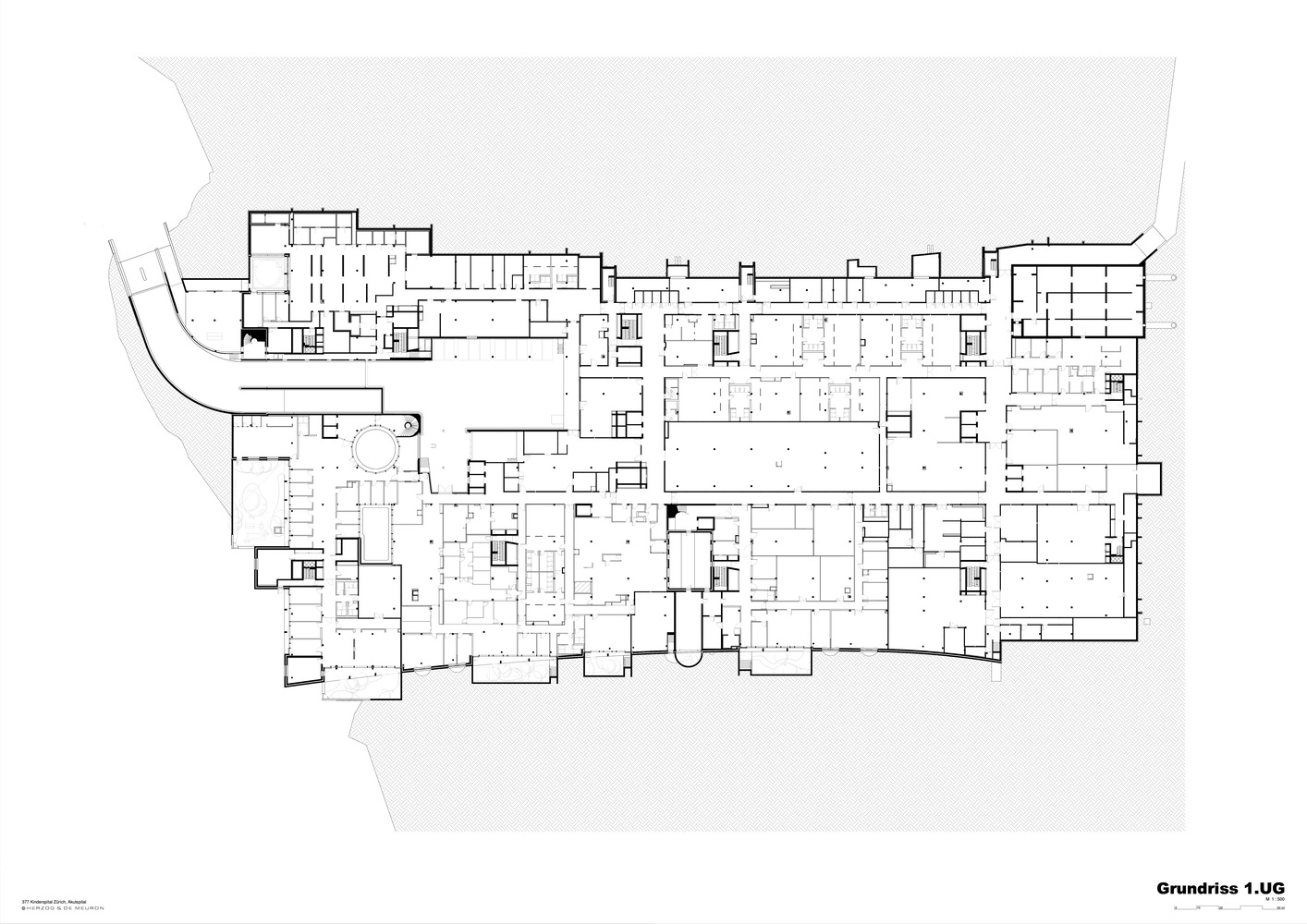
© Herzog & de Meuron
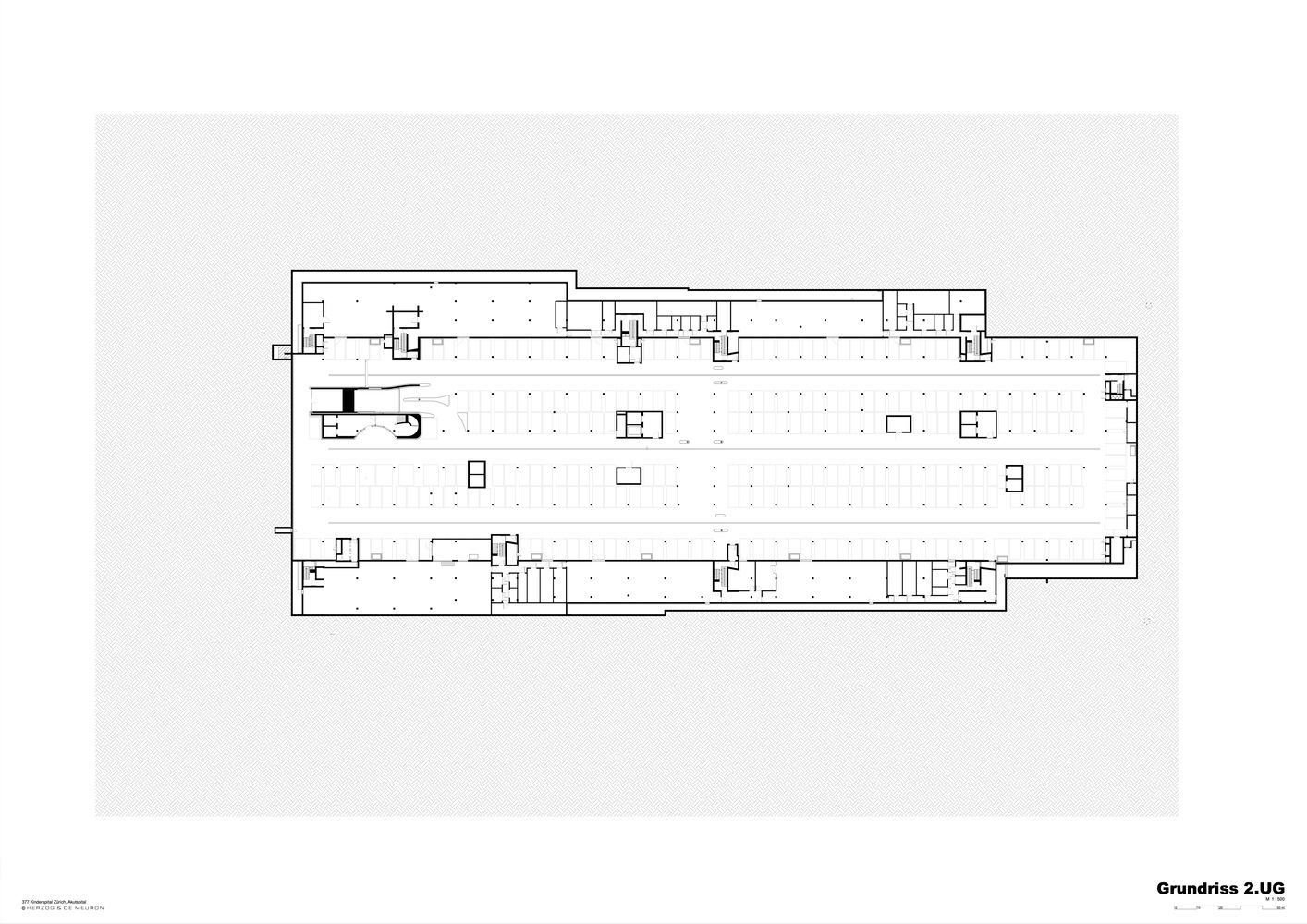
© Herzog & de Meuron
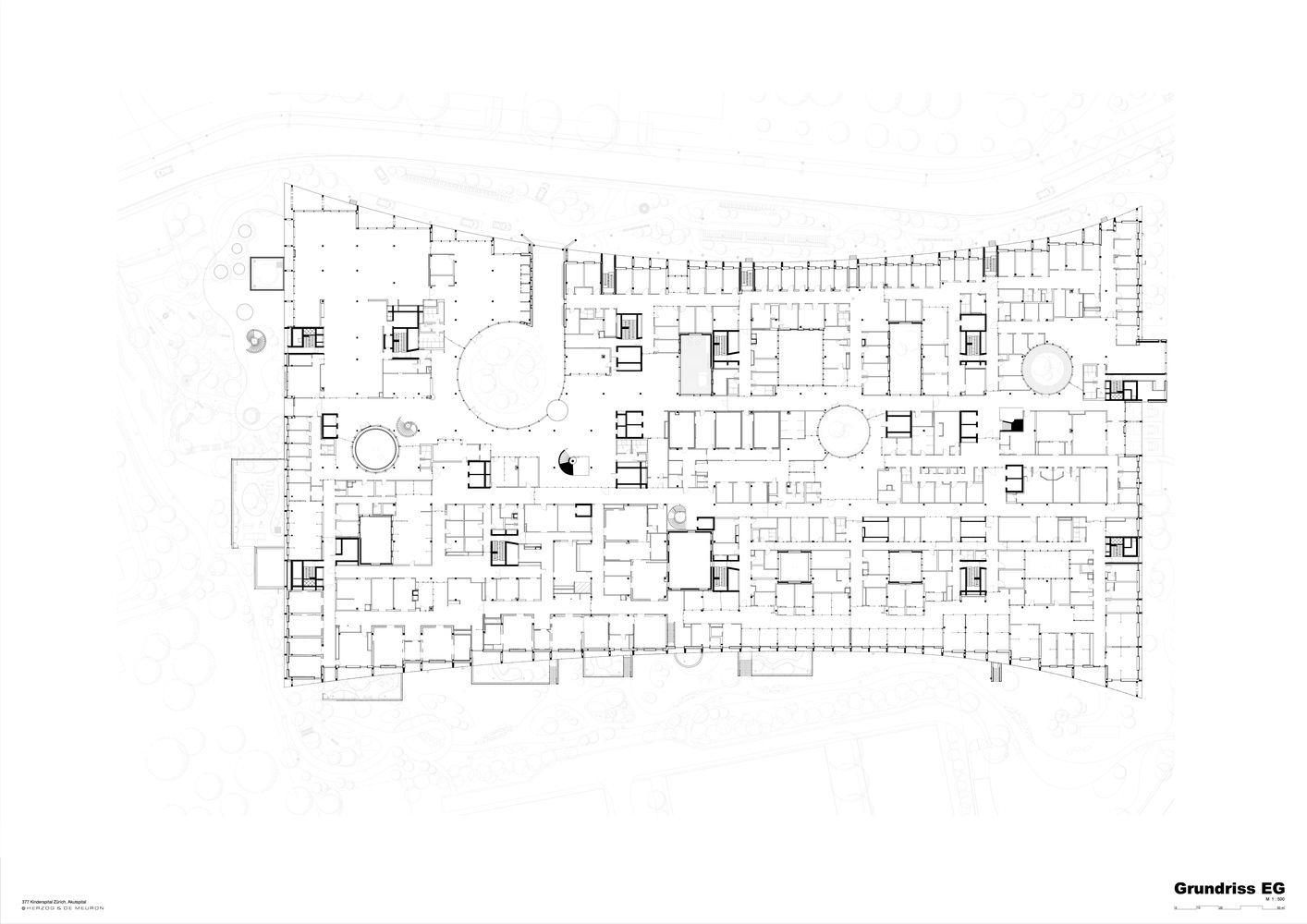
© Herzog & de Meuron
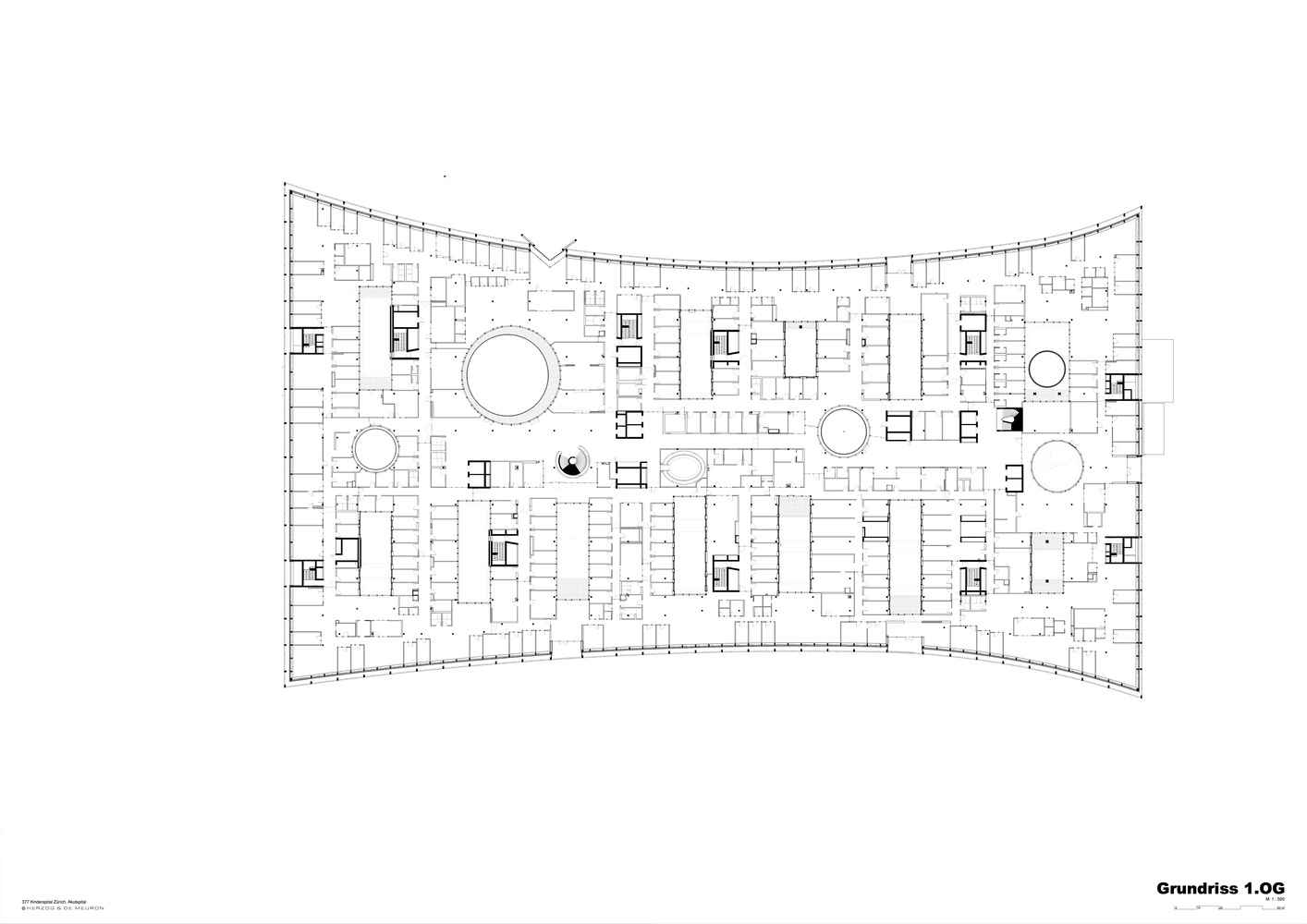
© Herzog & de Meuron

© Herzog & de Meuron
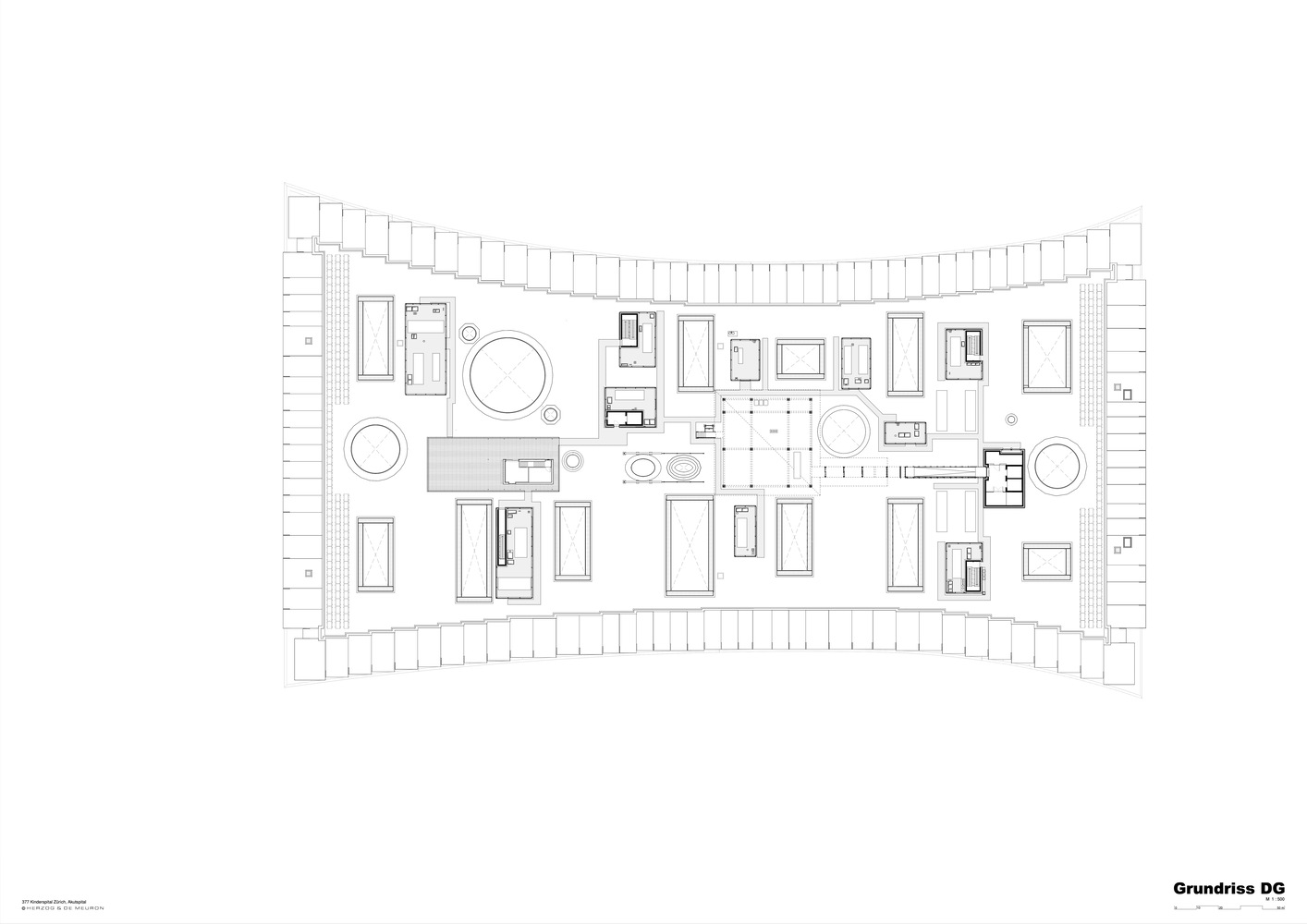
© Herzog & de Meuron
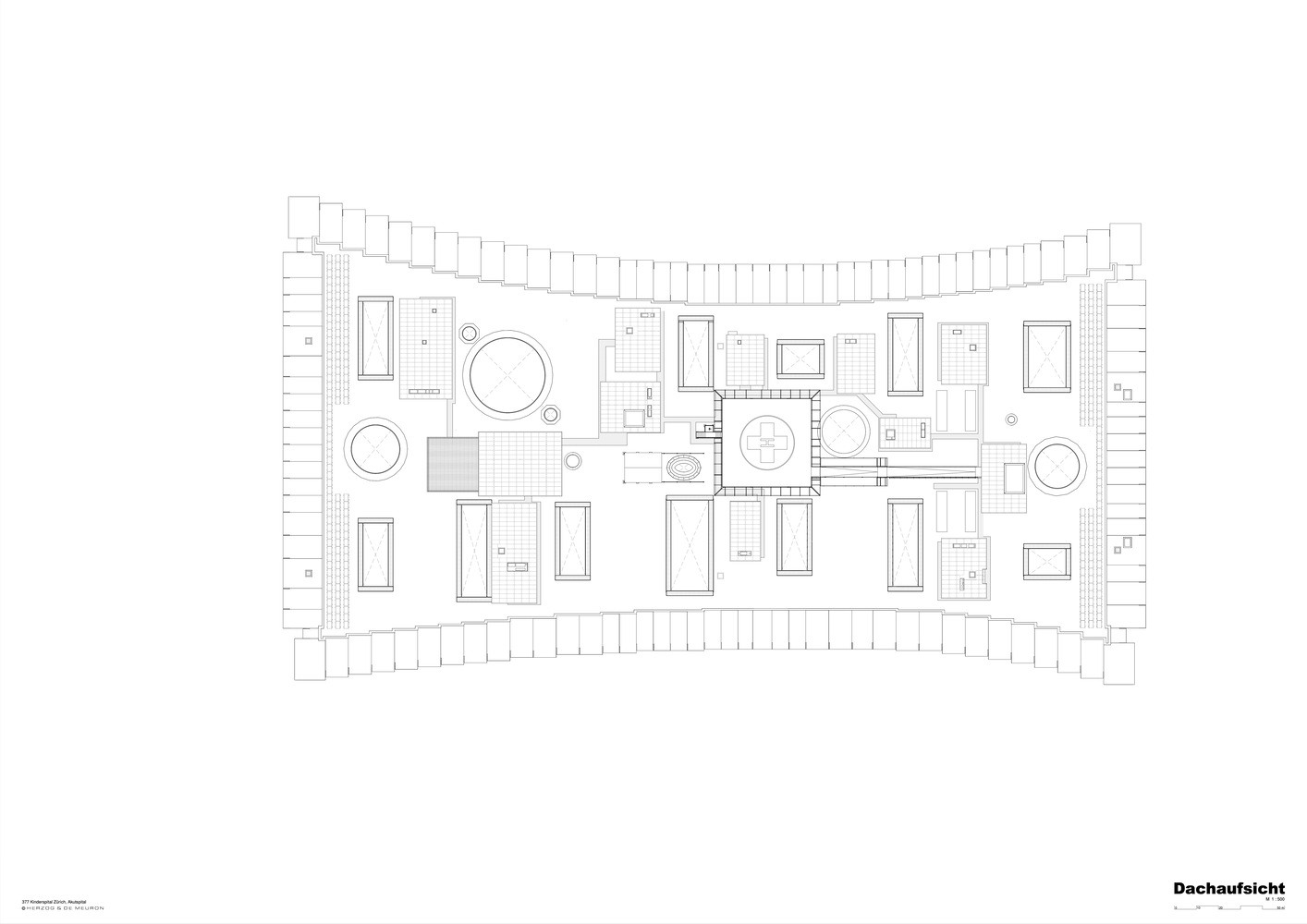
© Herzog & de Meuron
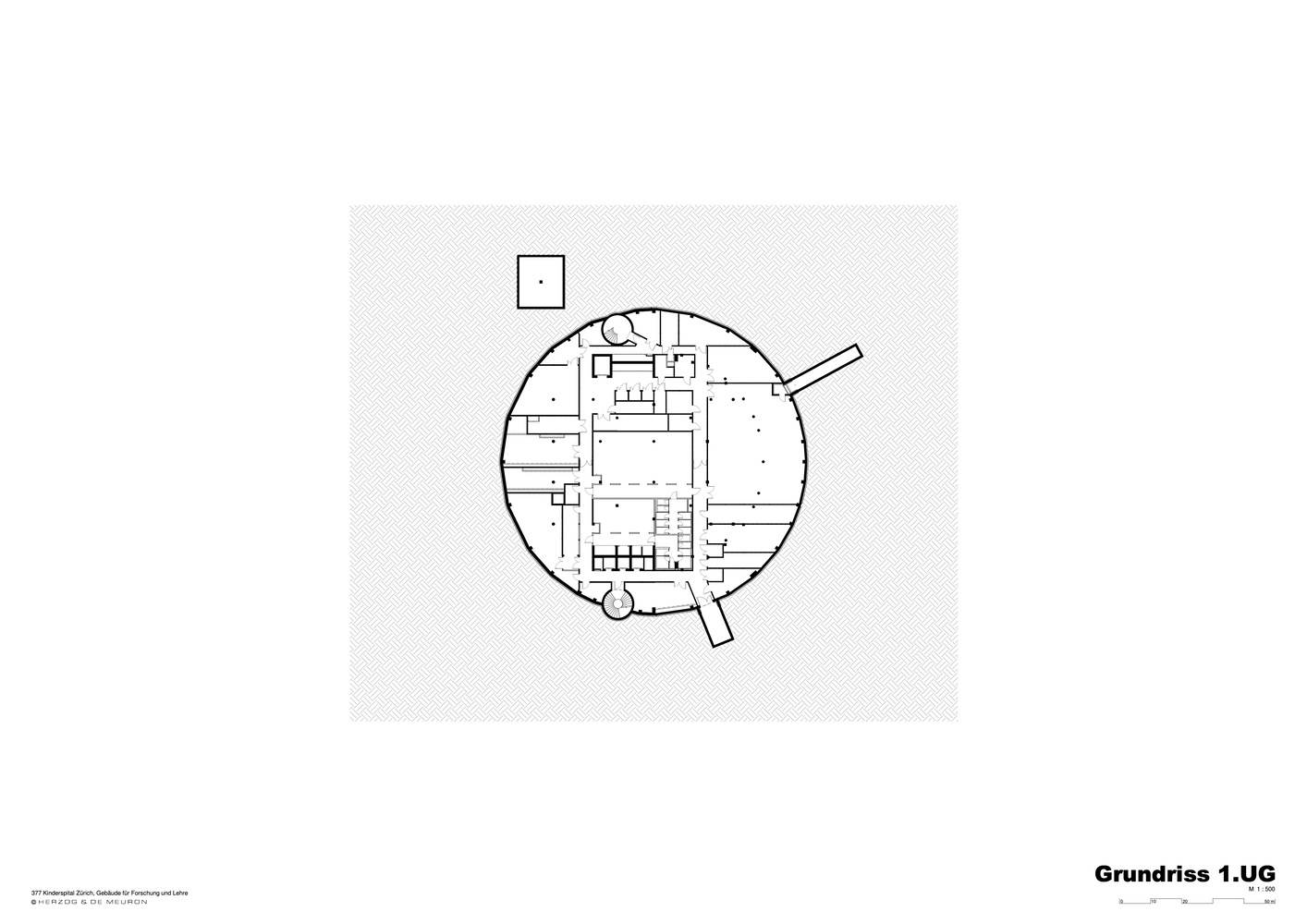
© Herzog & de Meuron

© Herzog & de Meuron

© Herzog & de Meuron

© Herzog & de Meuron

© Herzog & de Meuron
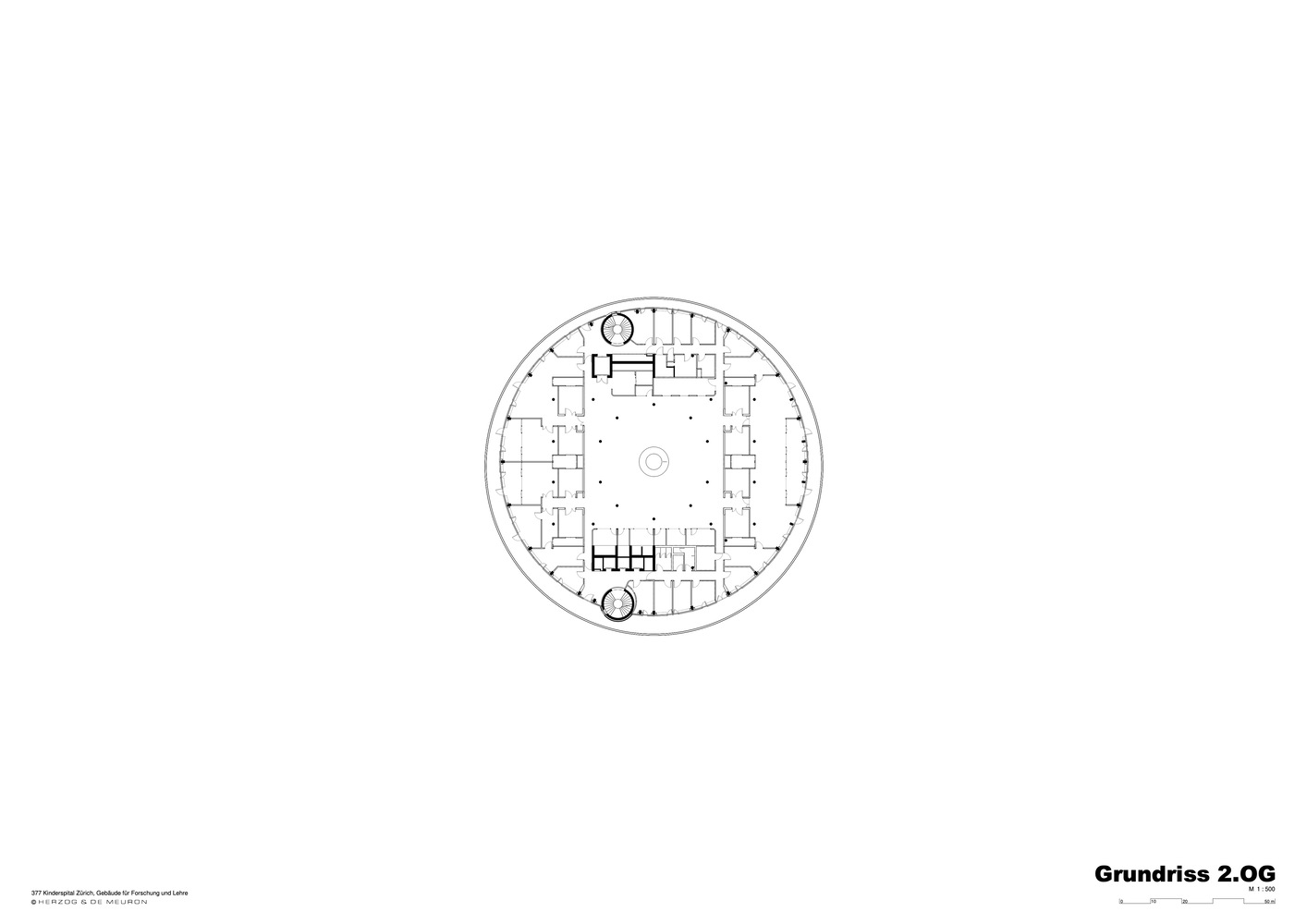
© Herzog & de Meuron
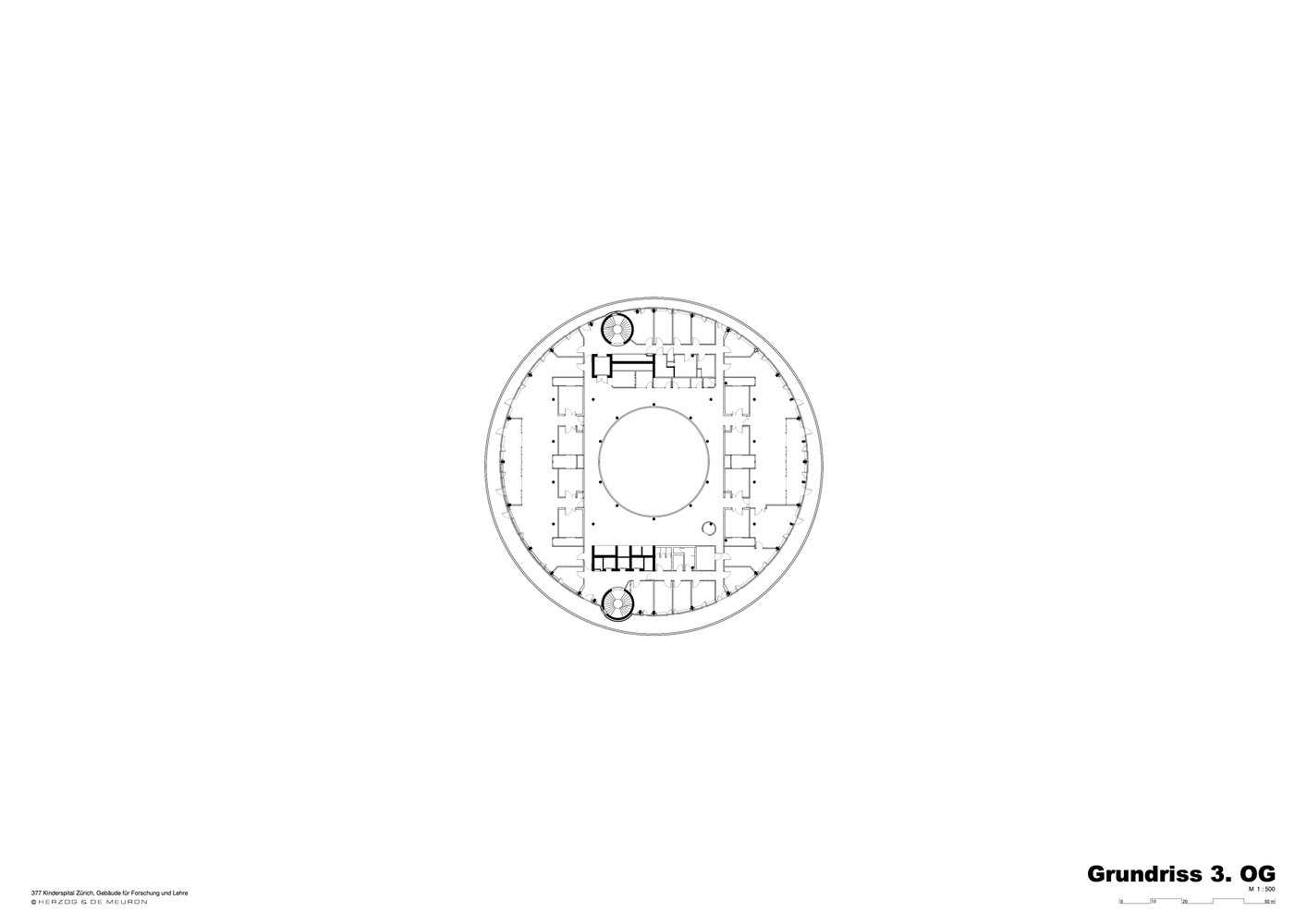
© Herzog & de Meuron

© Herzog & de Meuron
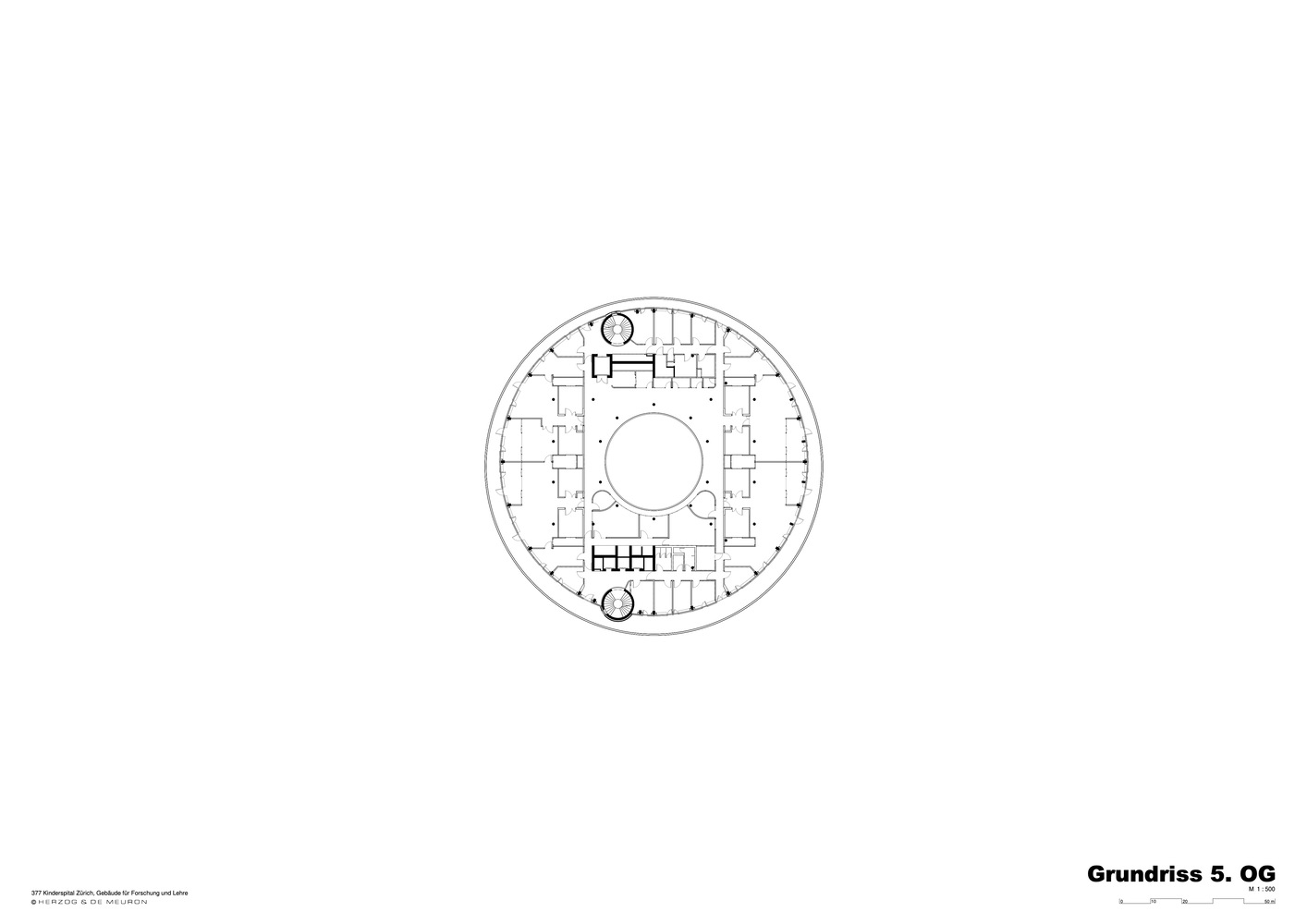
© Herzog & de Meuron

© Herzog & de Meuron
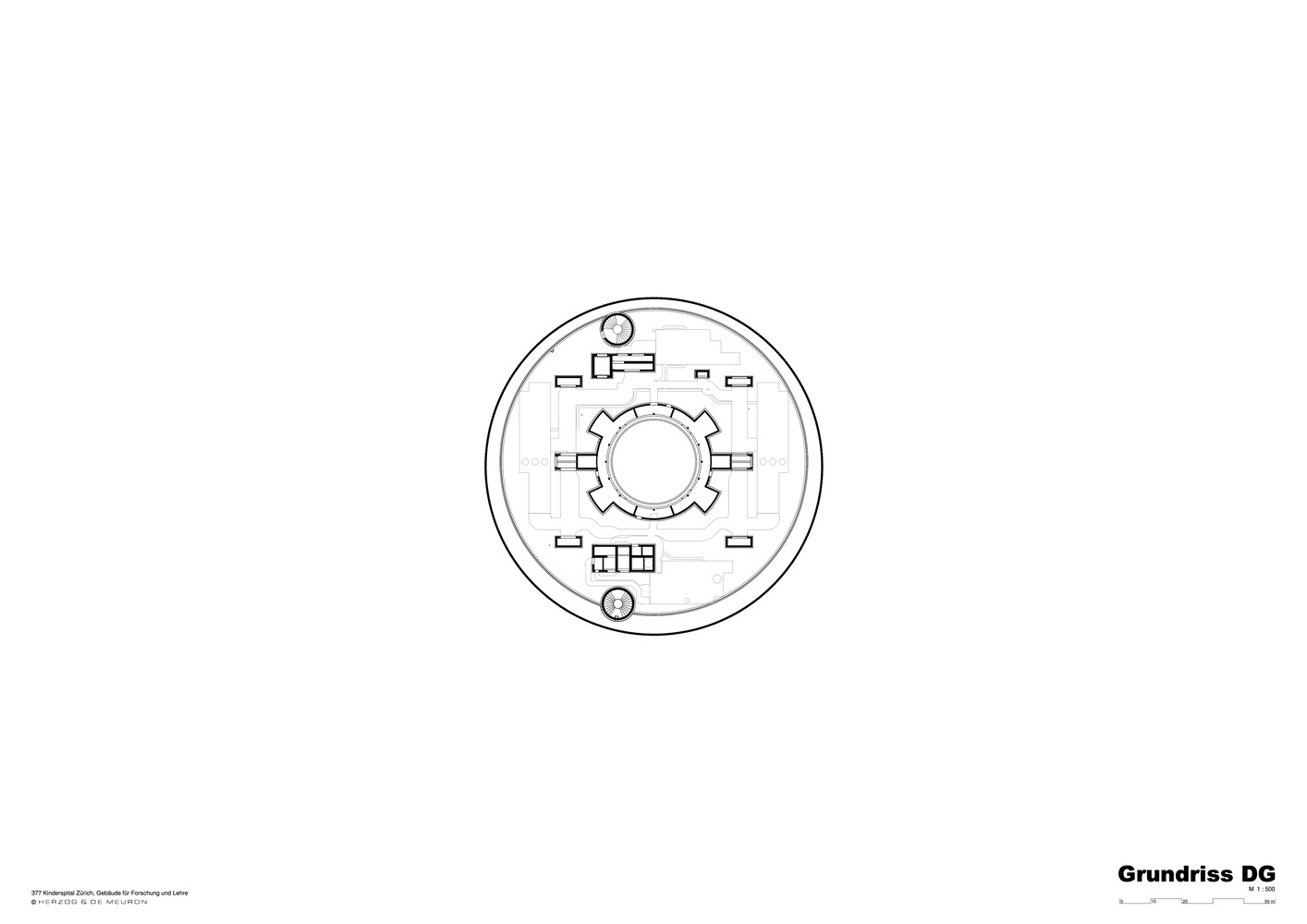
© Herzog & de Meuron


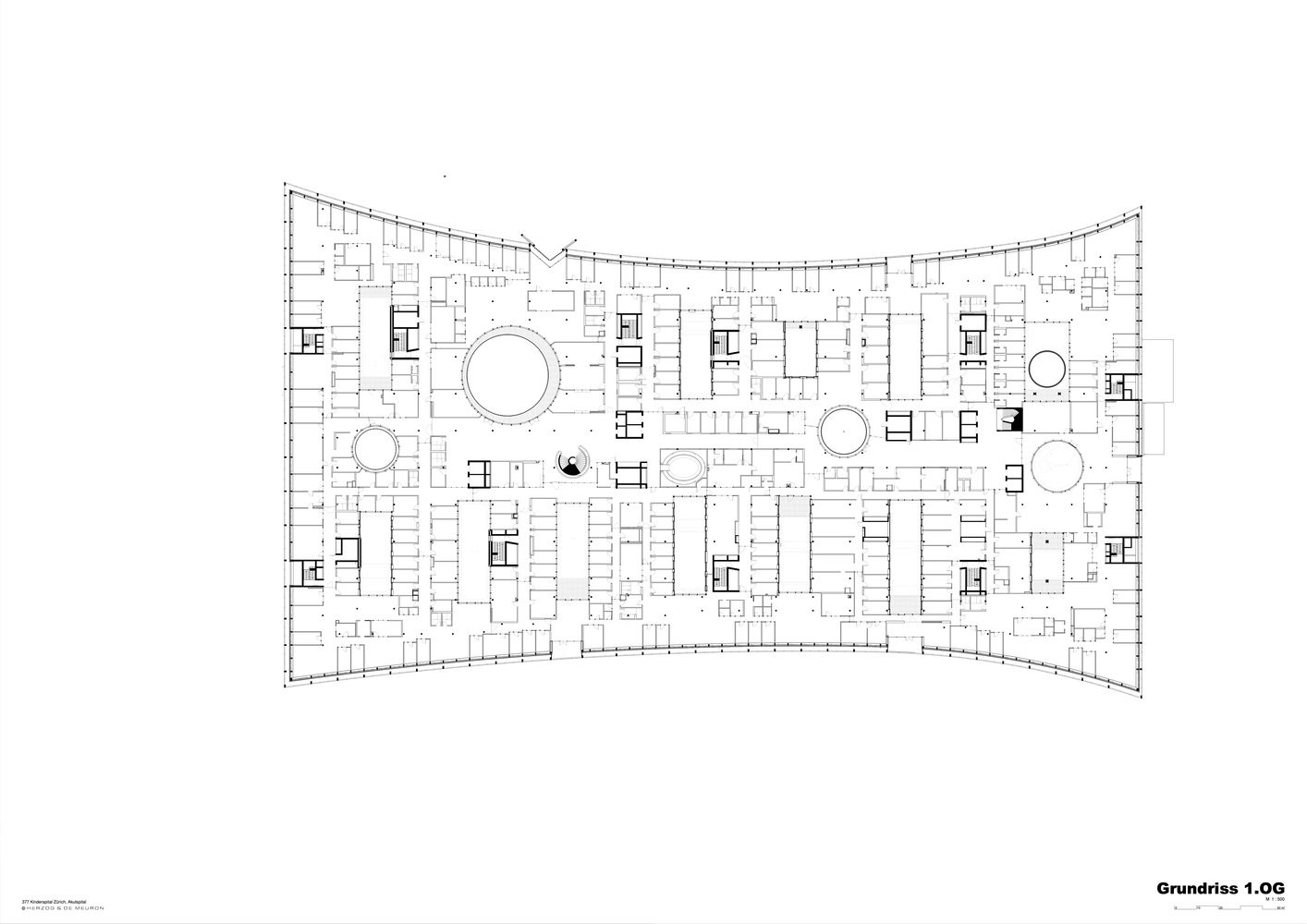
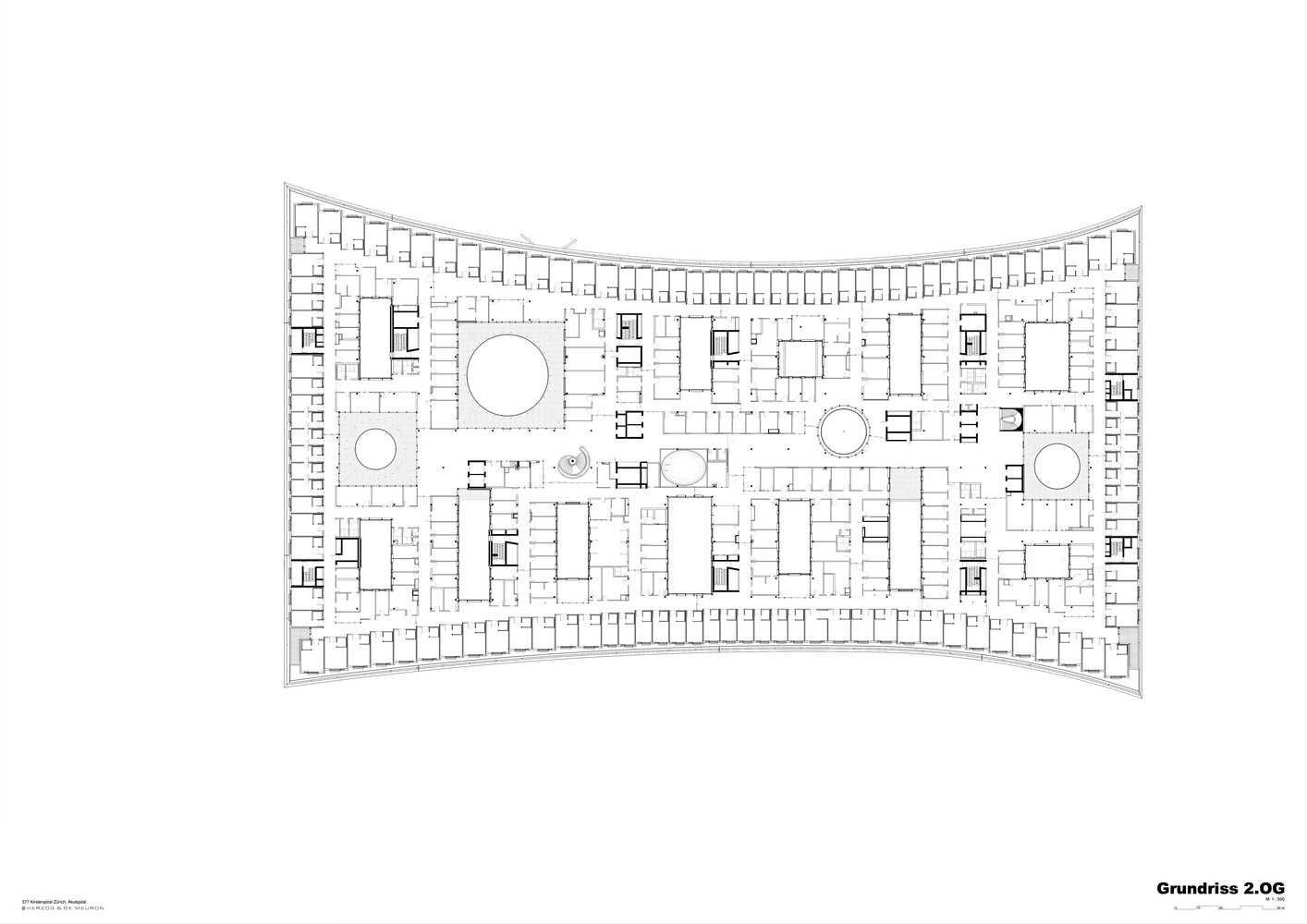
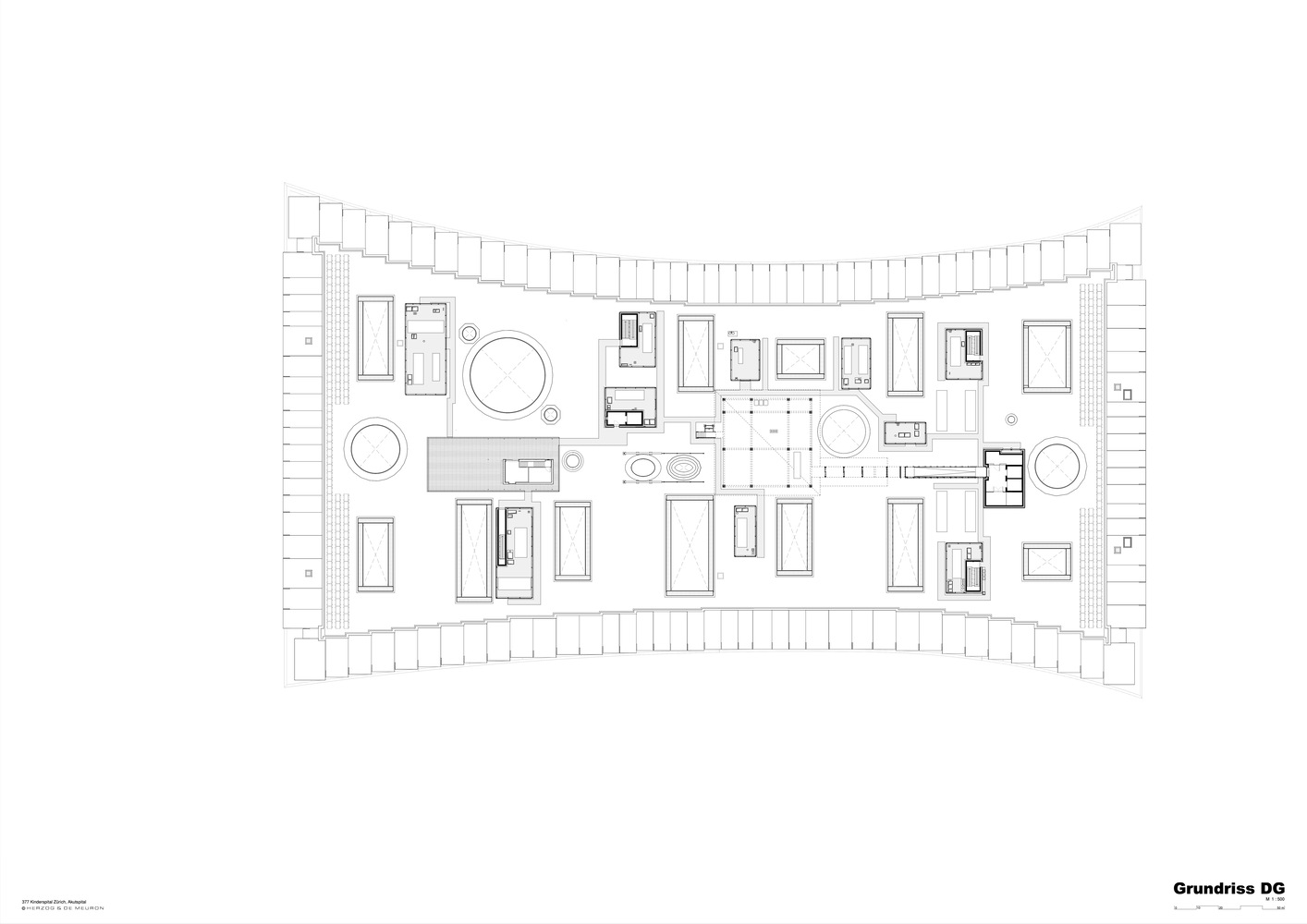
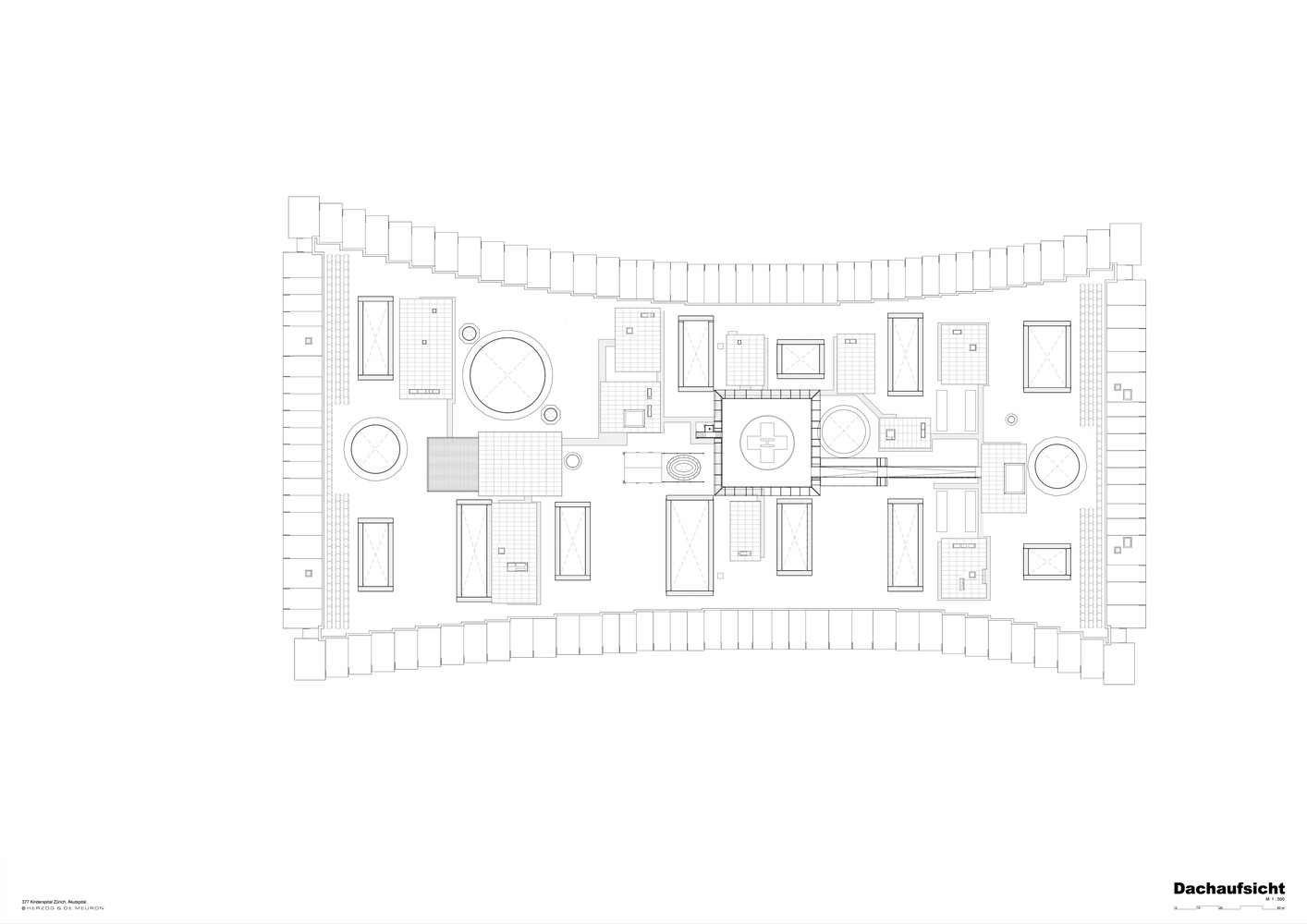
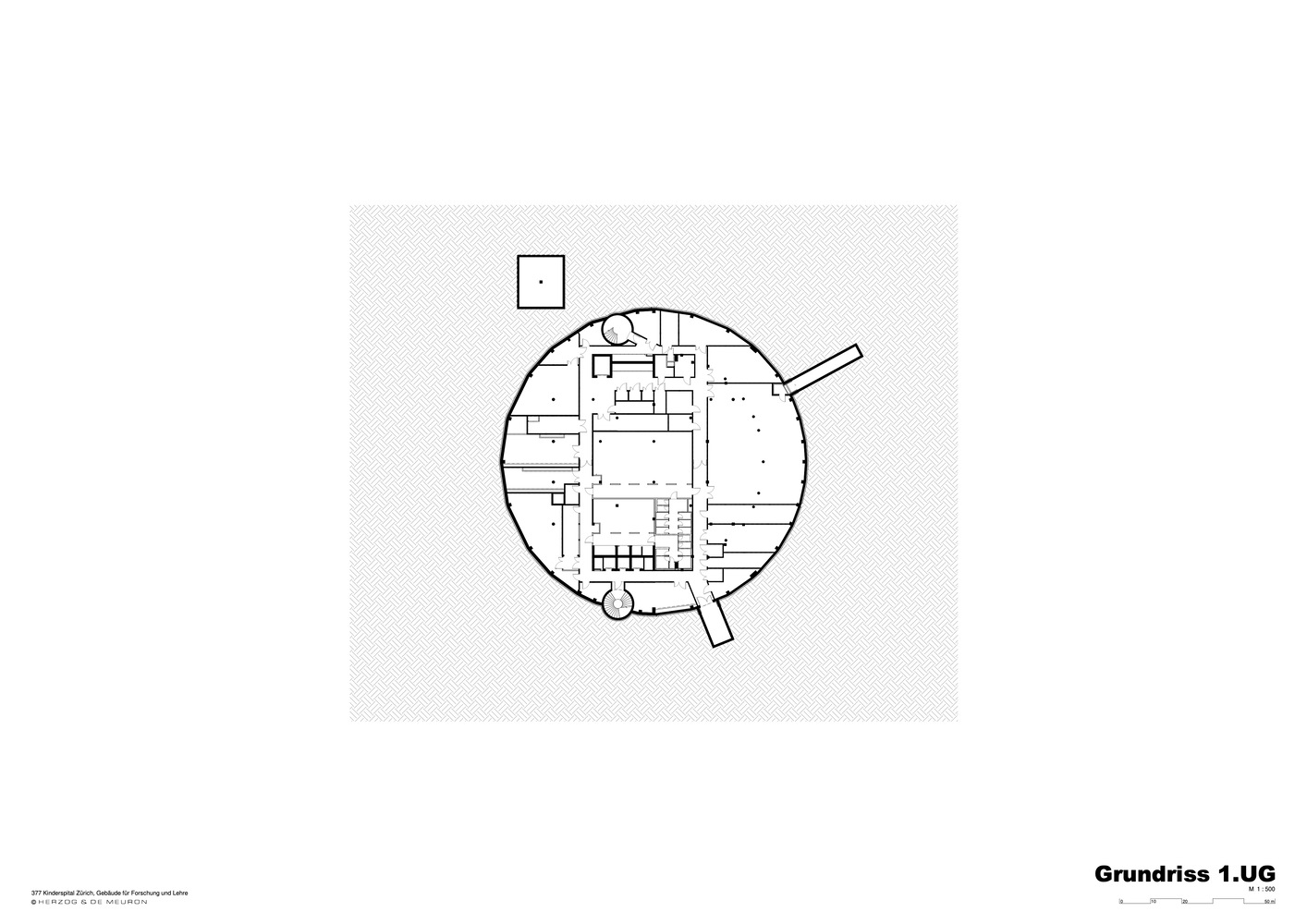



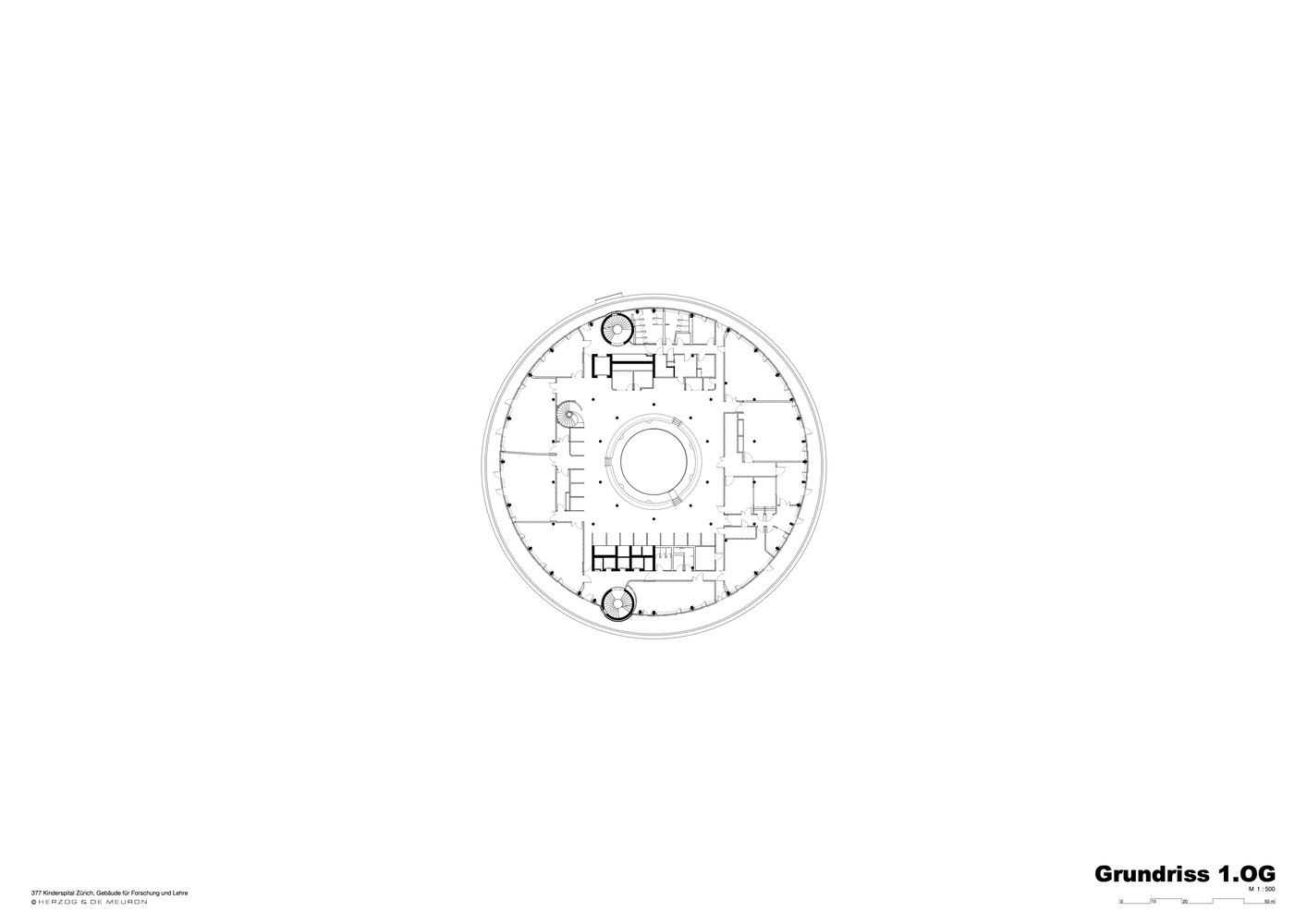
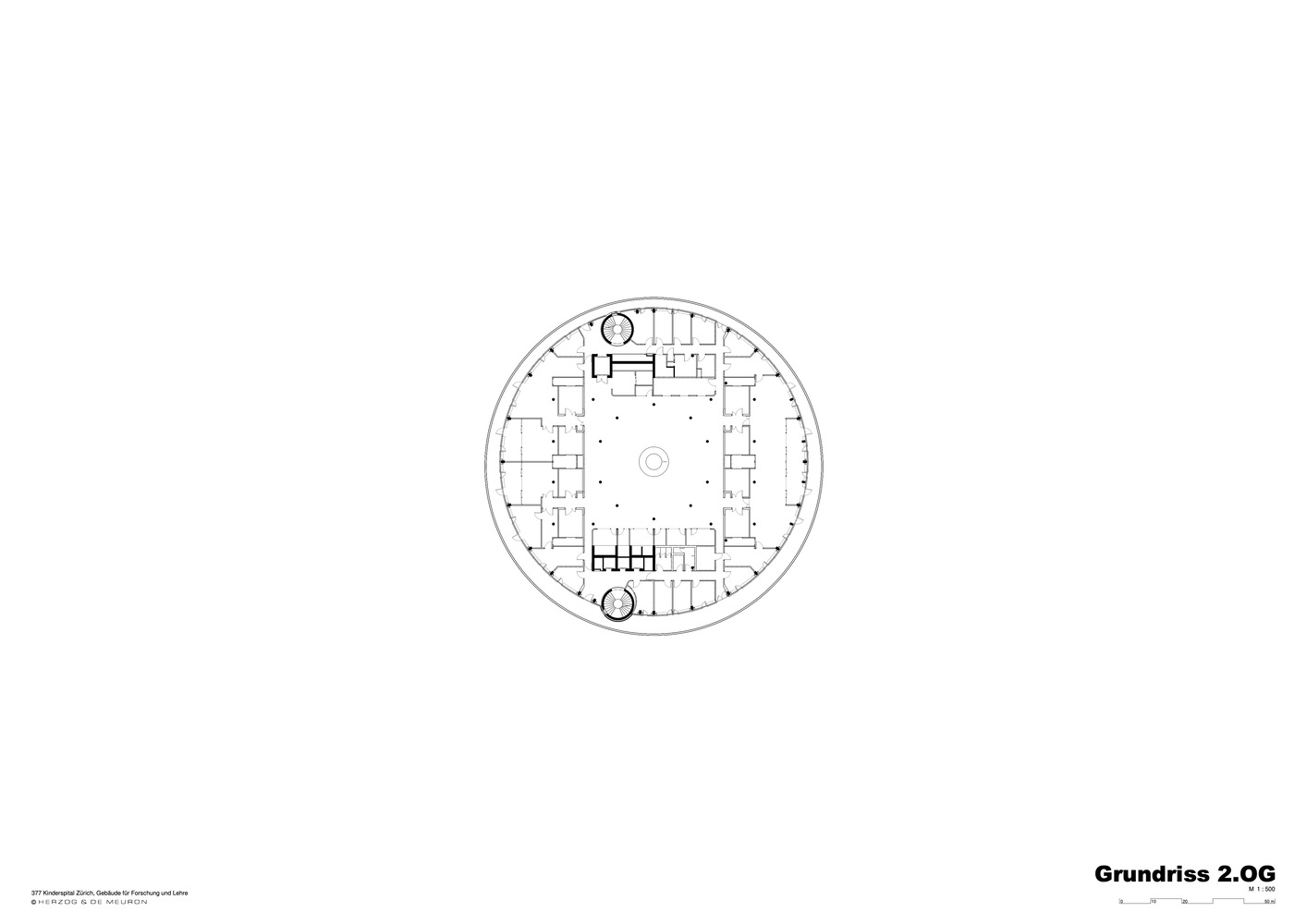



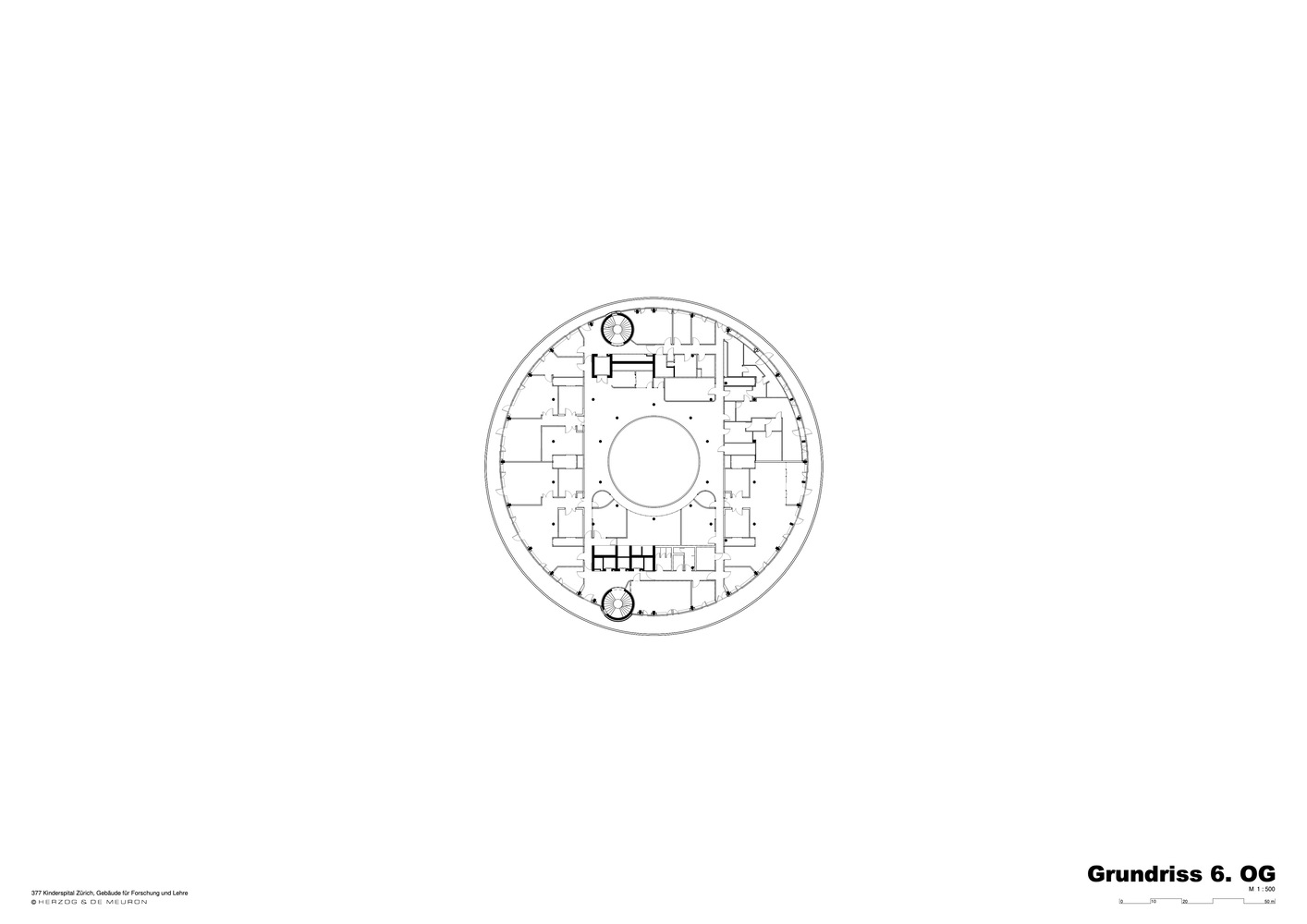


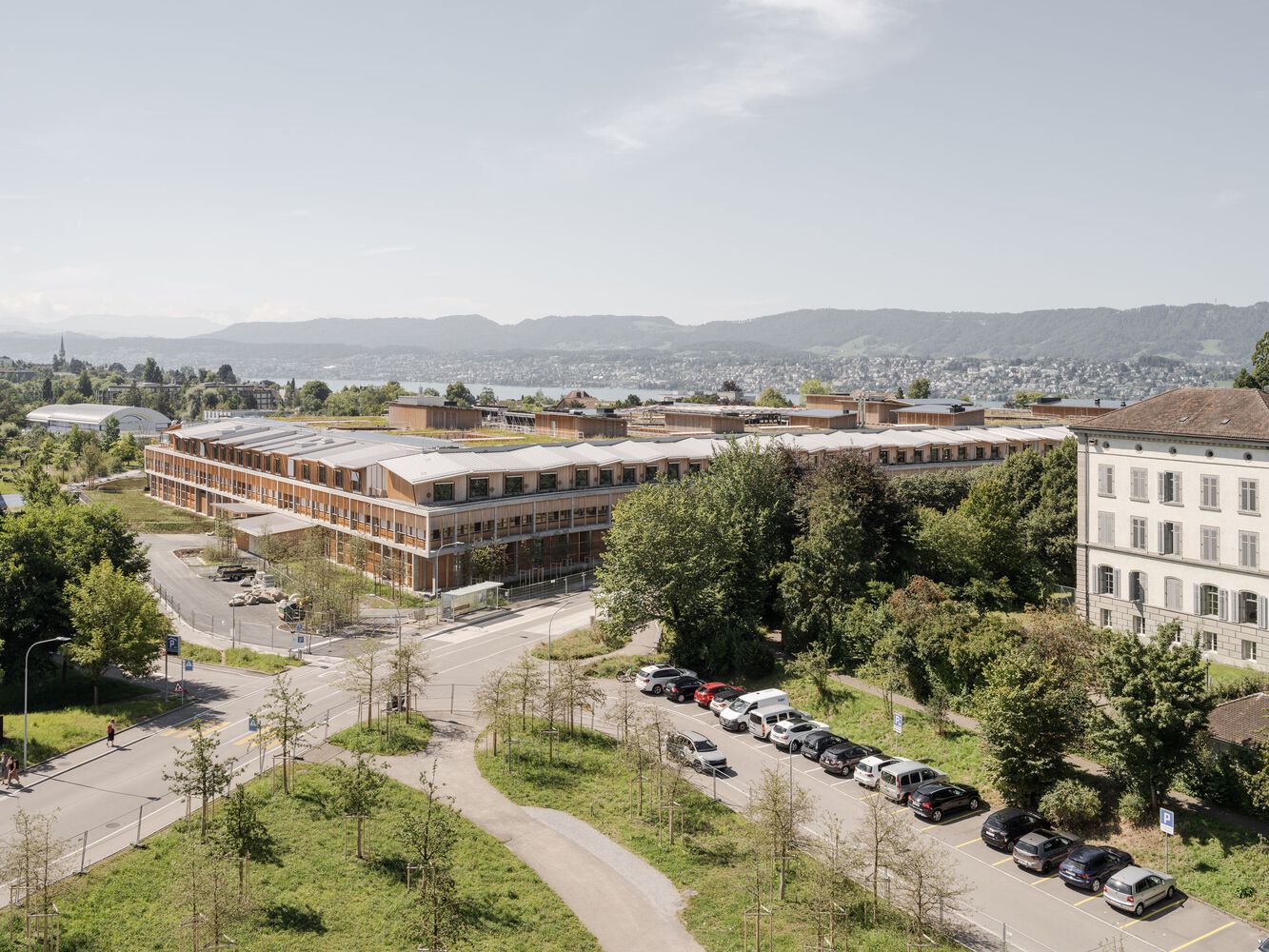
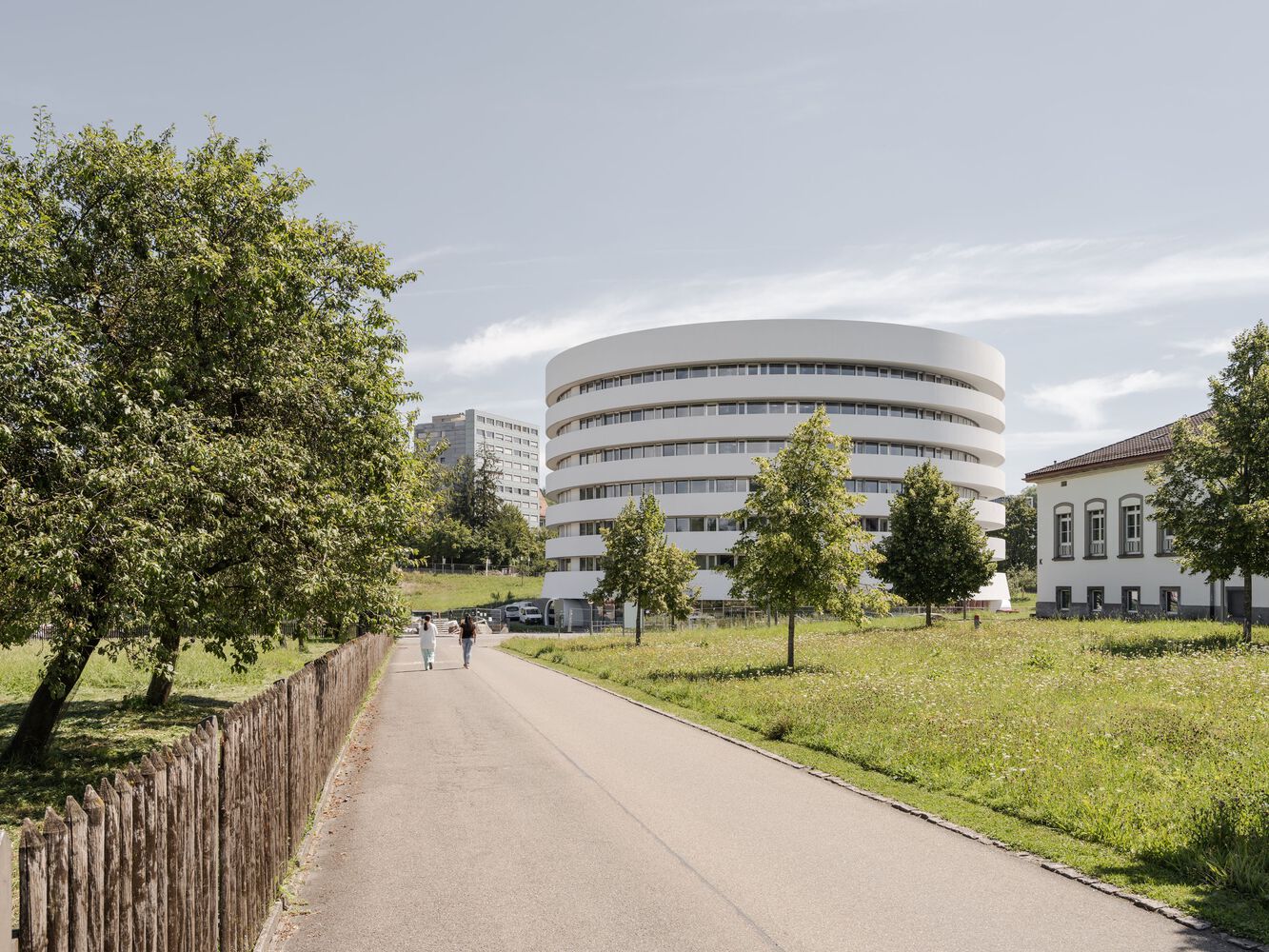
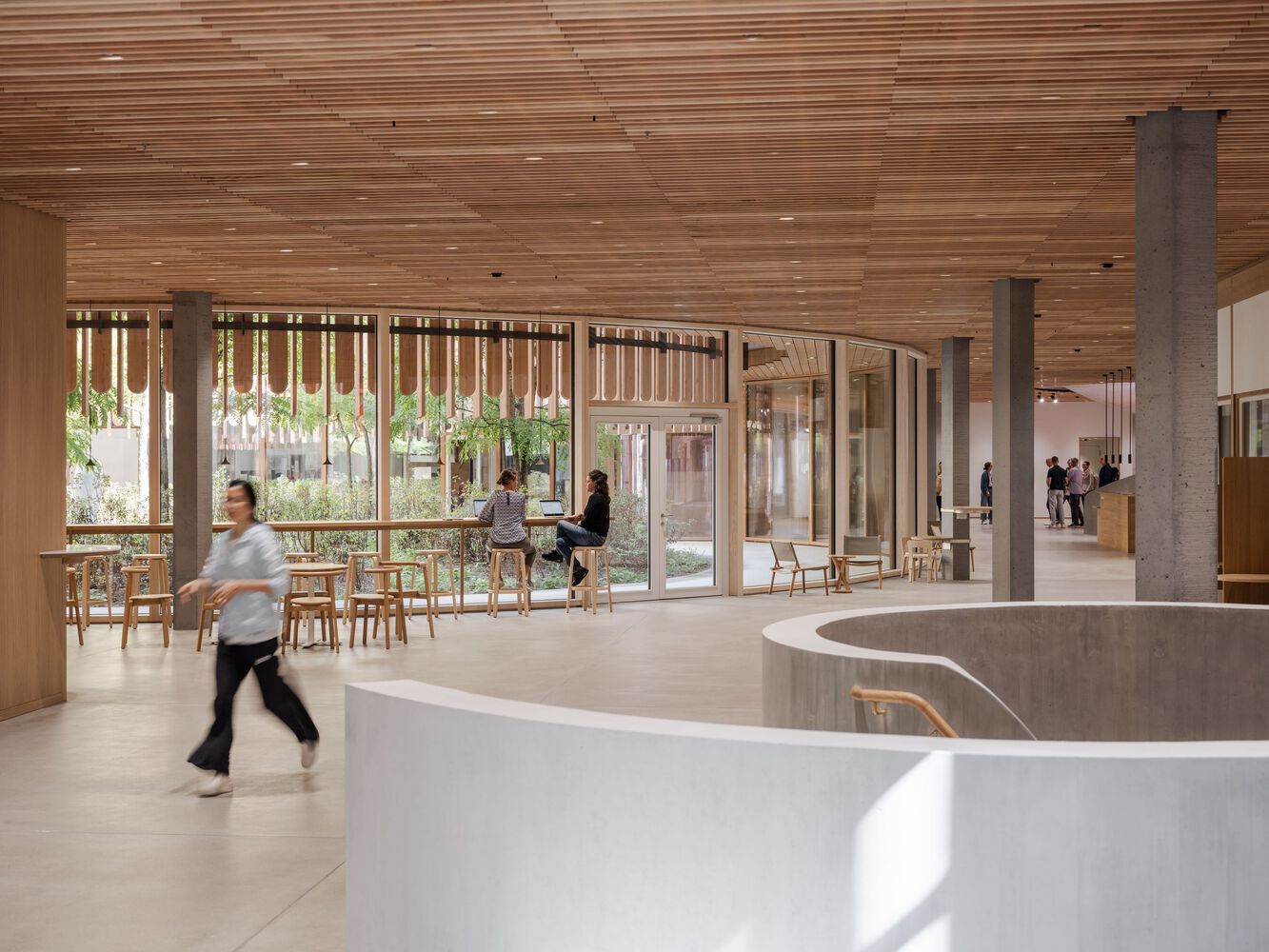

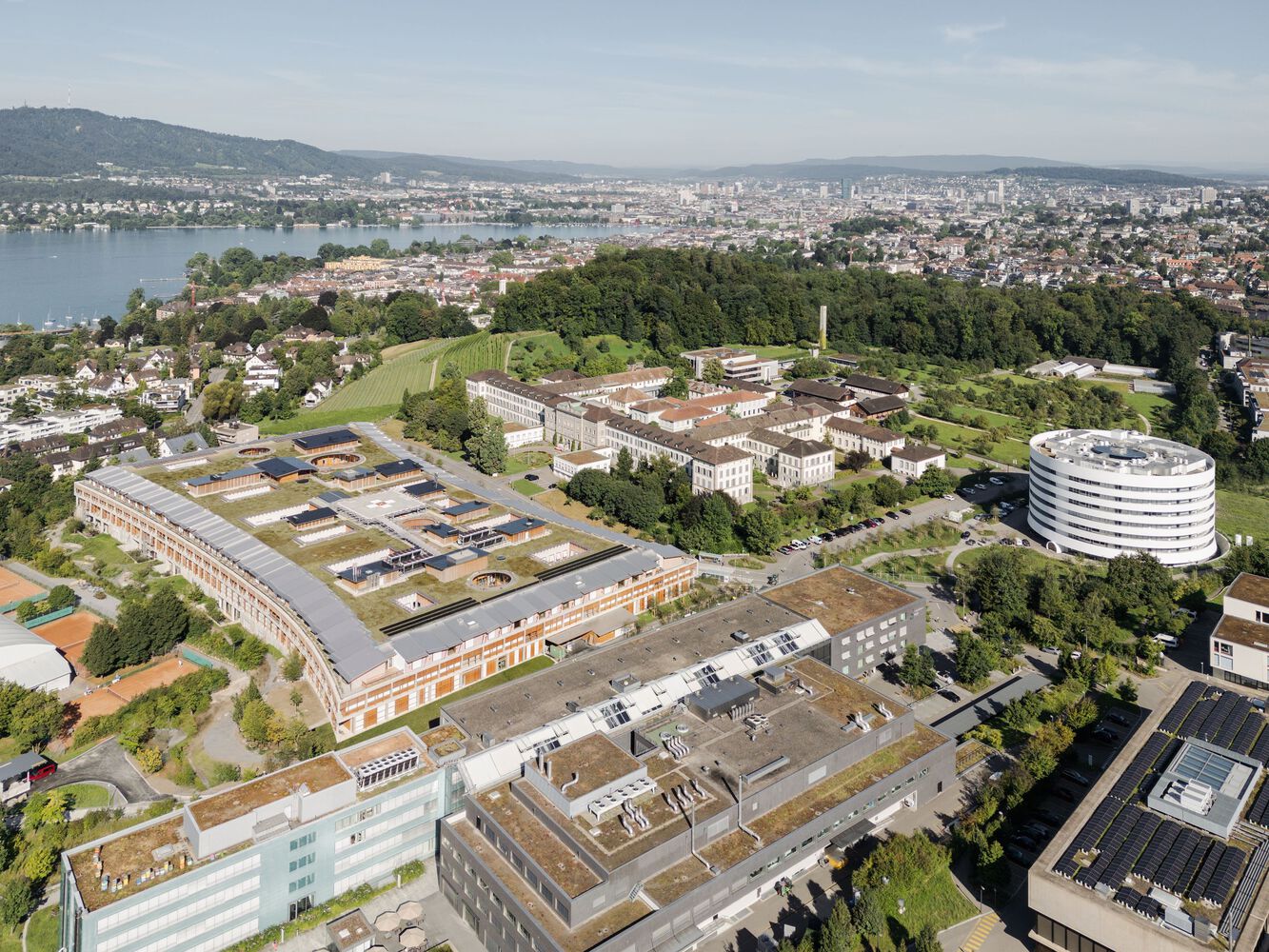




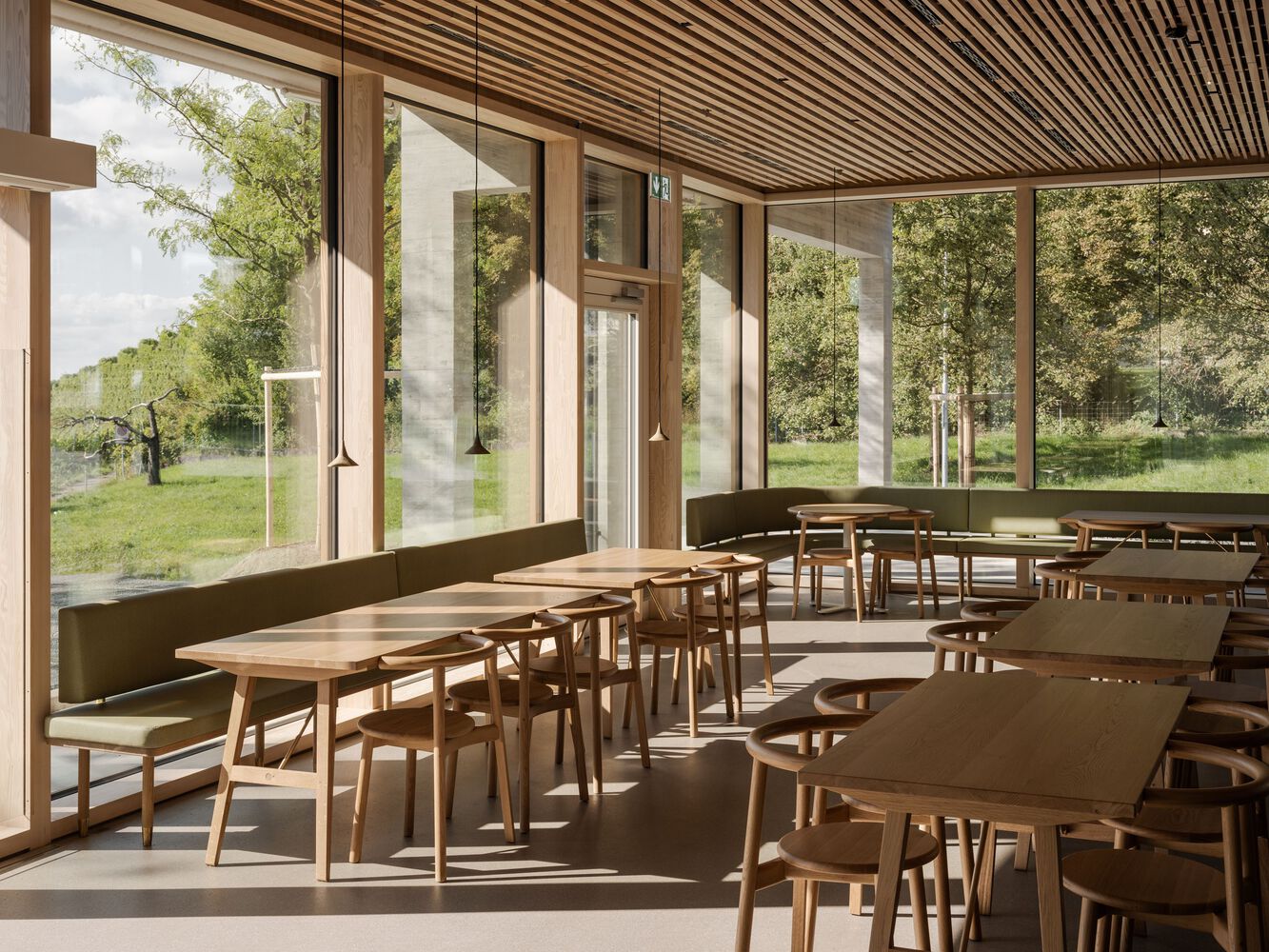




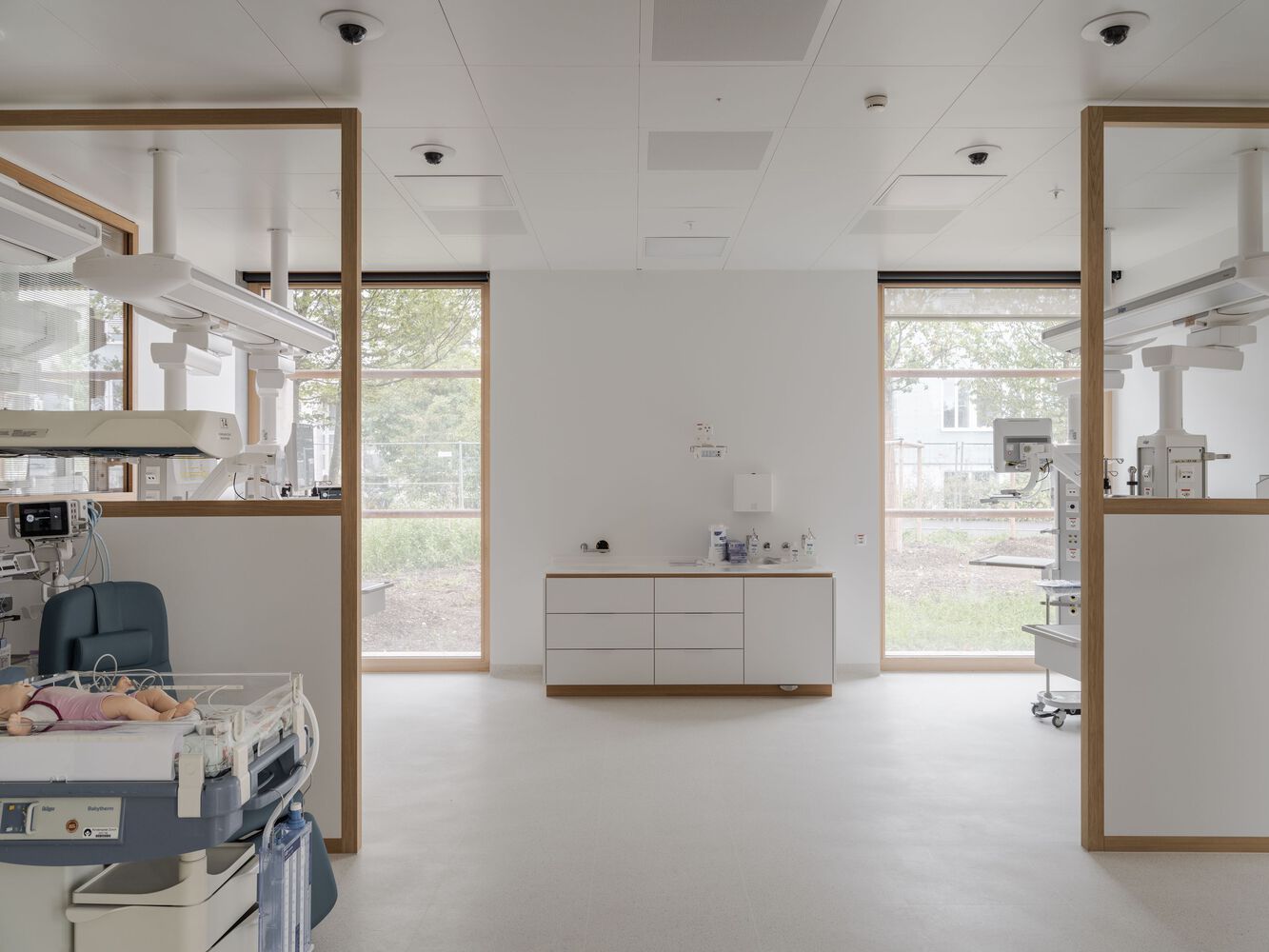
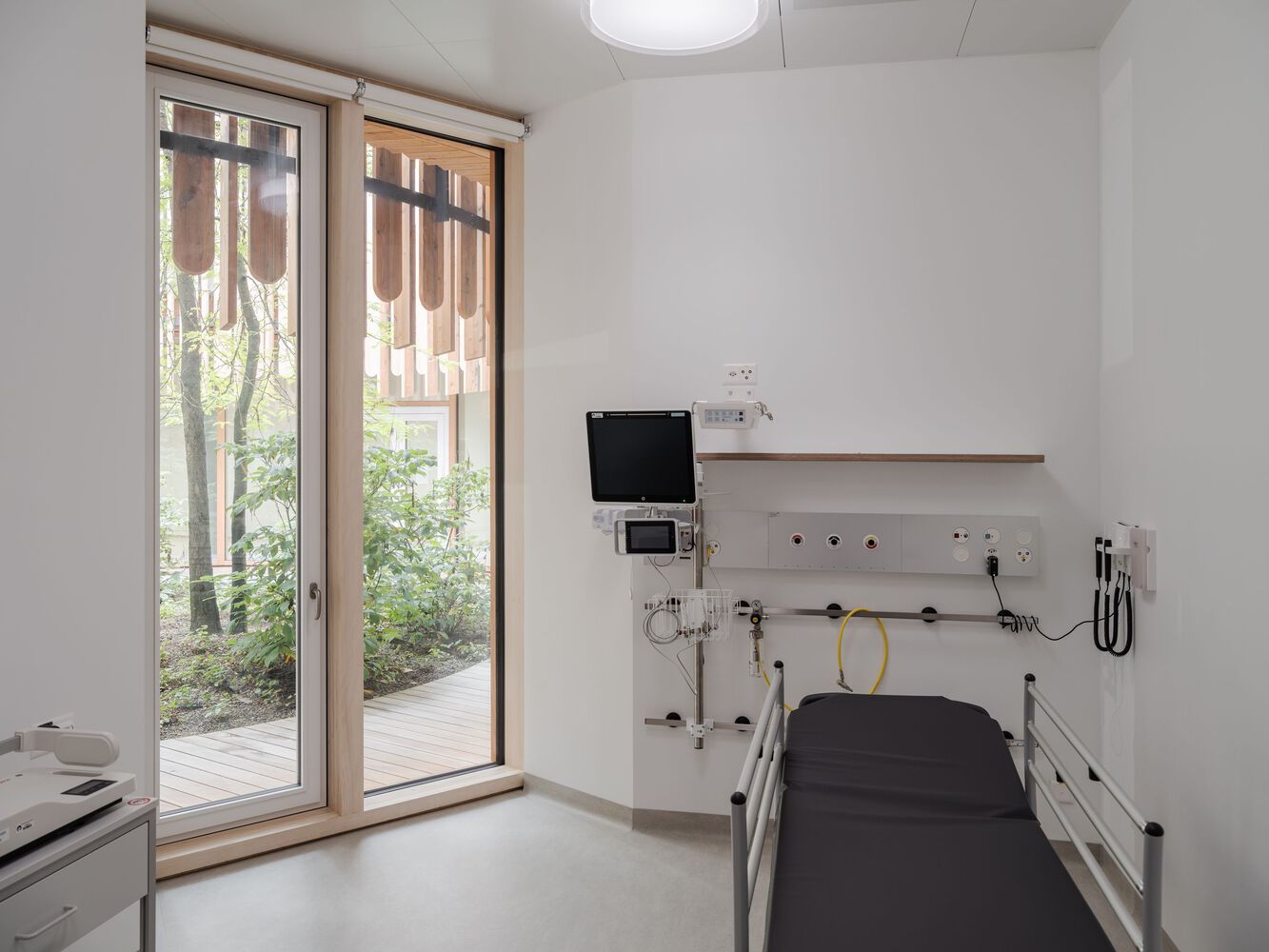



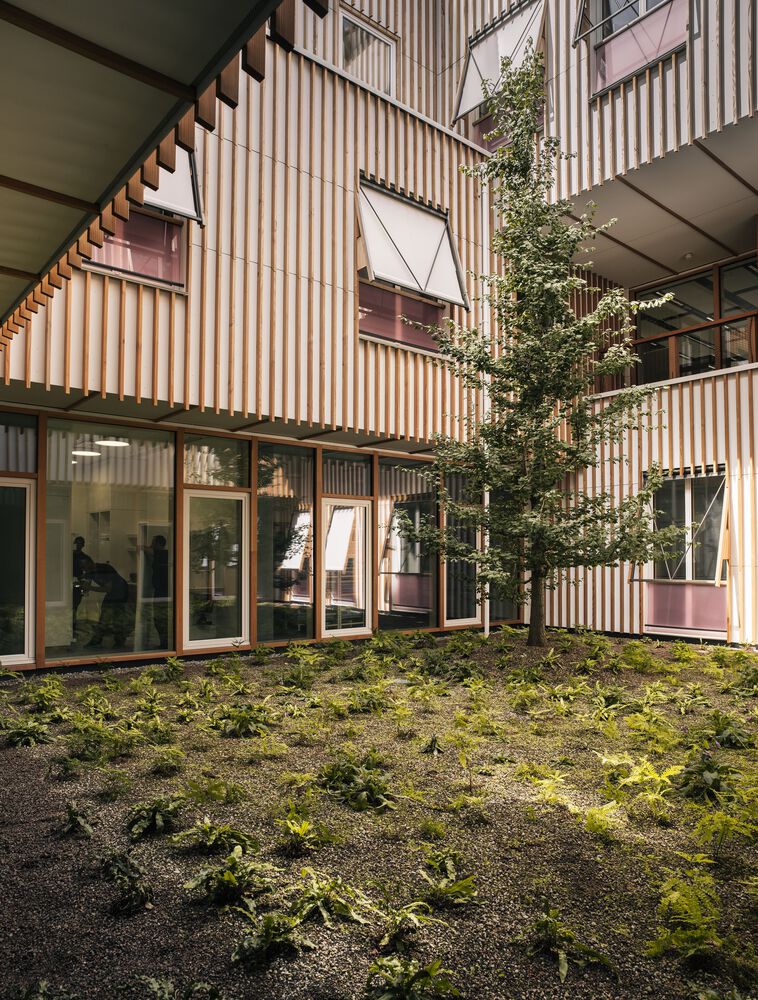








Cloud 11 | Snøhetta

张江科学之门双塔:以前瞻设计打造城市的创新引擎 | Gensler
Le Stalle丨Pedro&Juana

Memphis Art Museum | Herzog & de Meuron
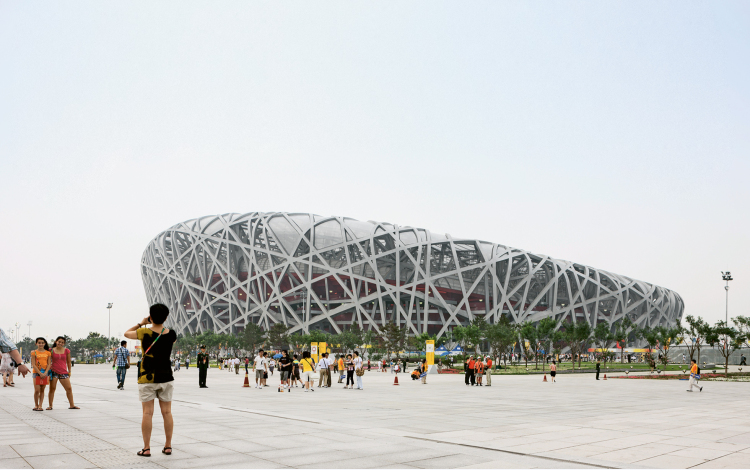
National Stadium | Herzog & de Meuron


University Children’s Hospital Zurich | Herzog & de Meuron

ZONES I POLY VOLY 新办公空间丨众舍设计事务所

气泡宇宙 | VAVE Studio

深圳湾超级总部基地城市展厅改造设计丨PILLS

订阅我们的资讯
切勿错过全球大设计产业链大事件和重要设计资源公司和新产品的推荐
联系我们
举报
返回顶部






